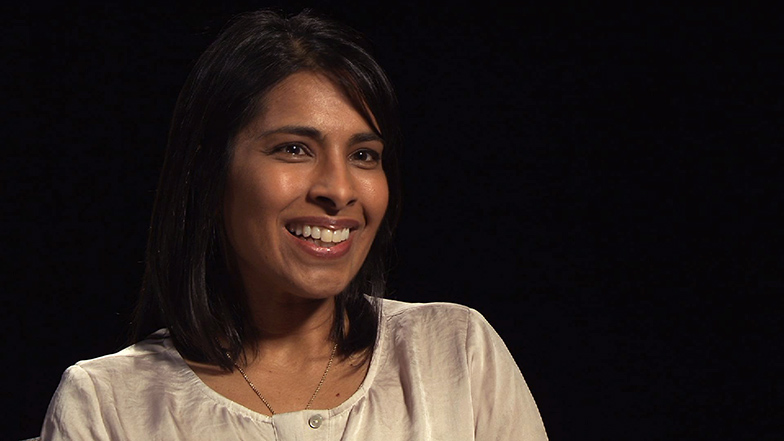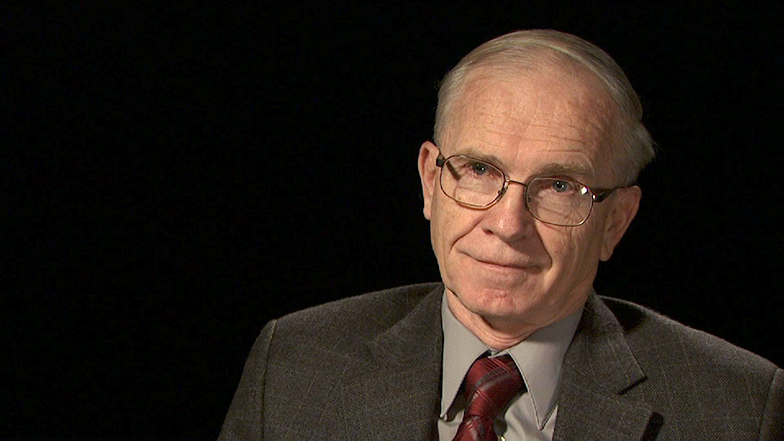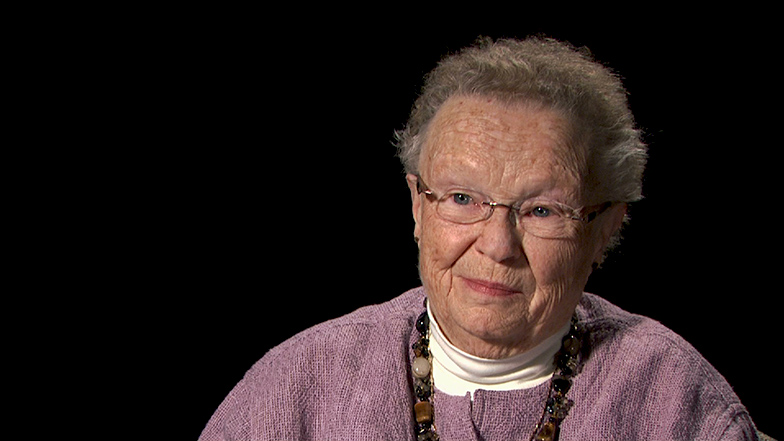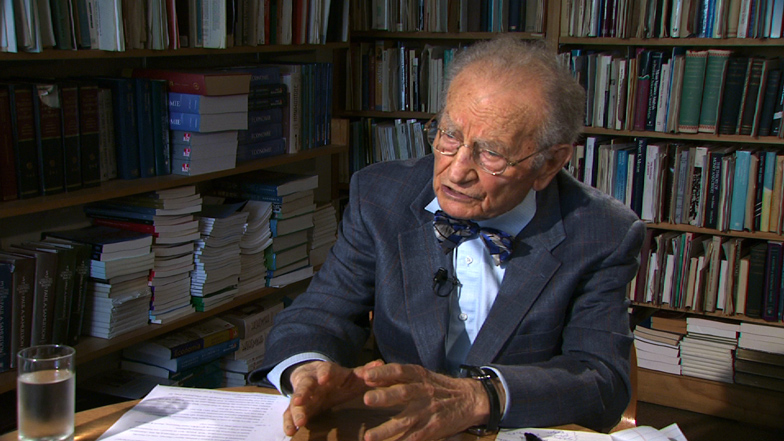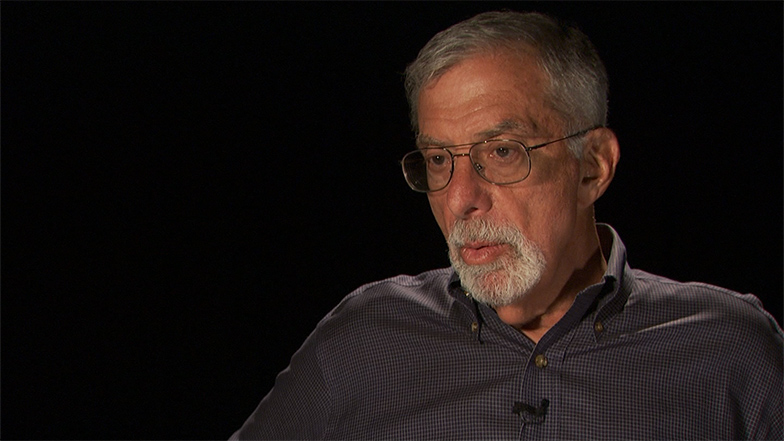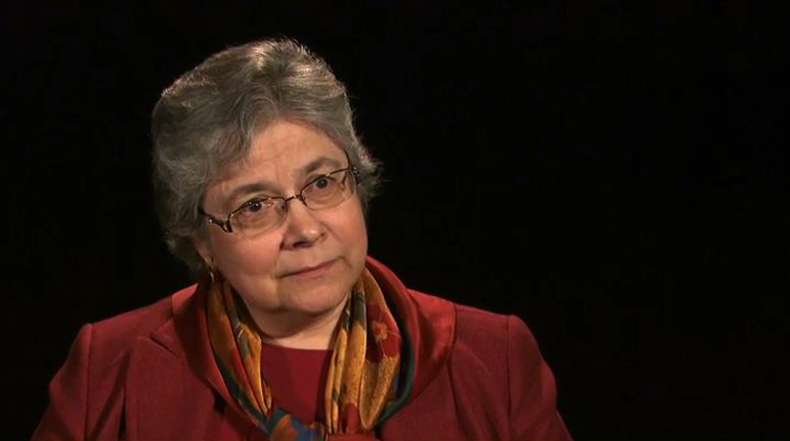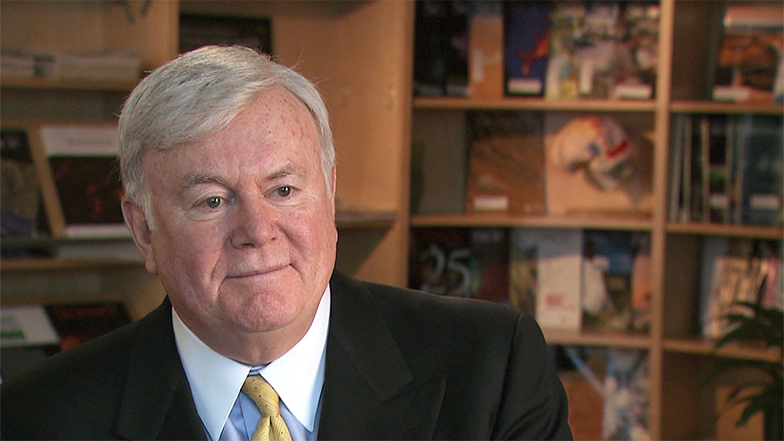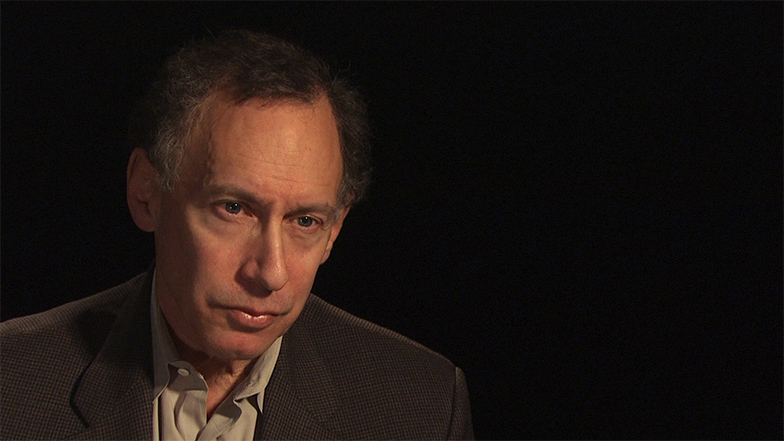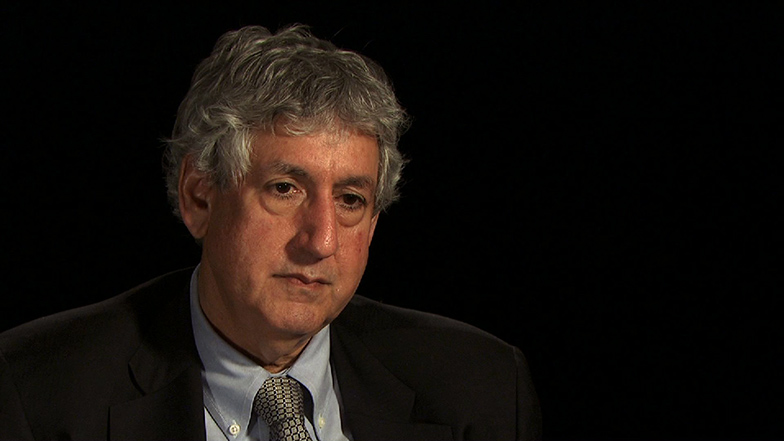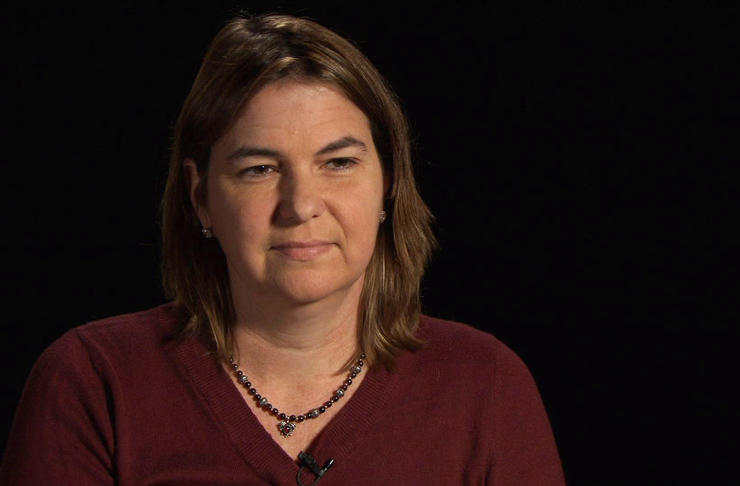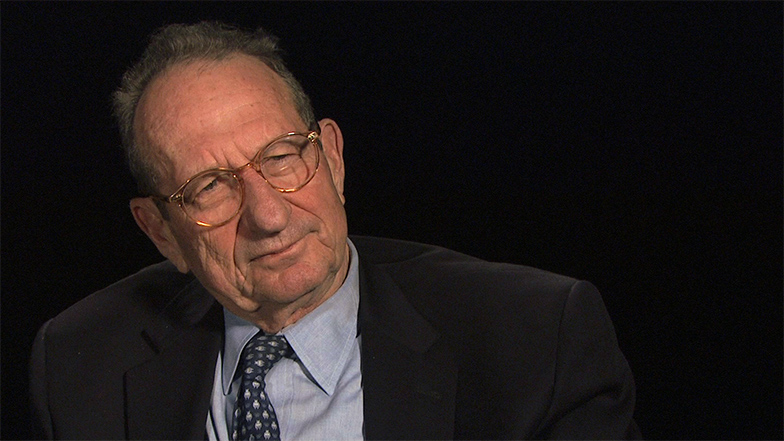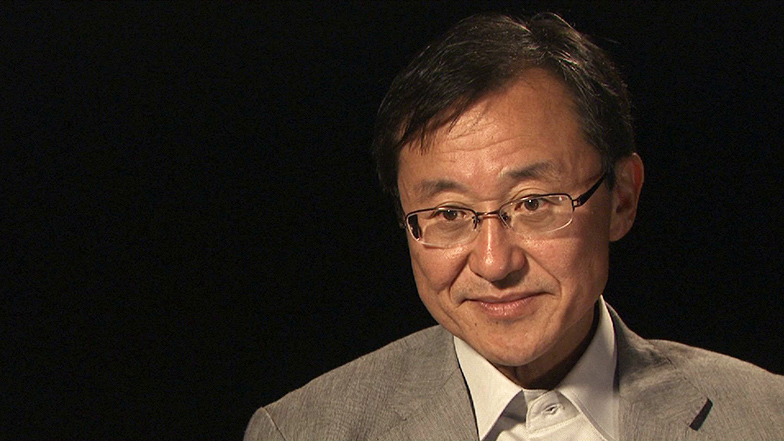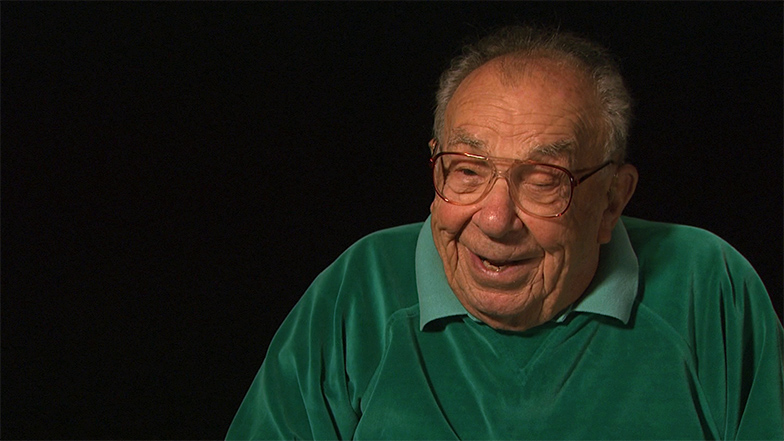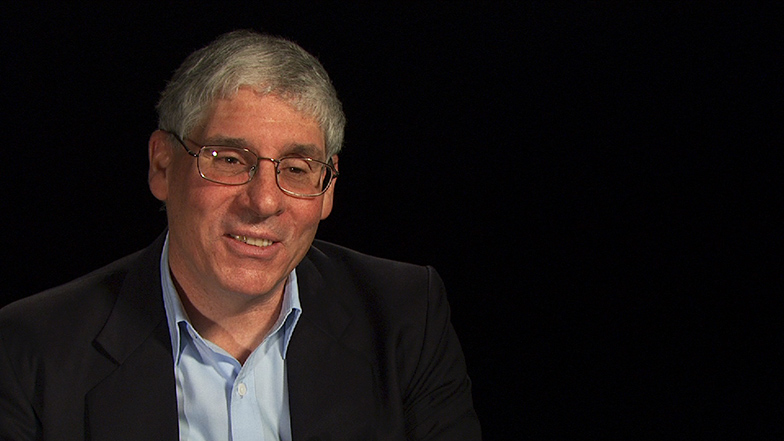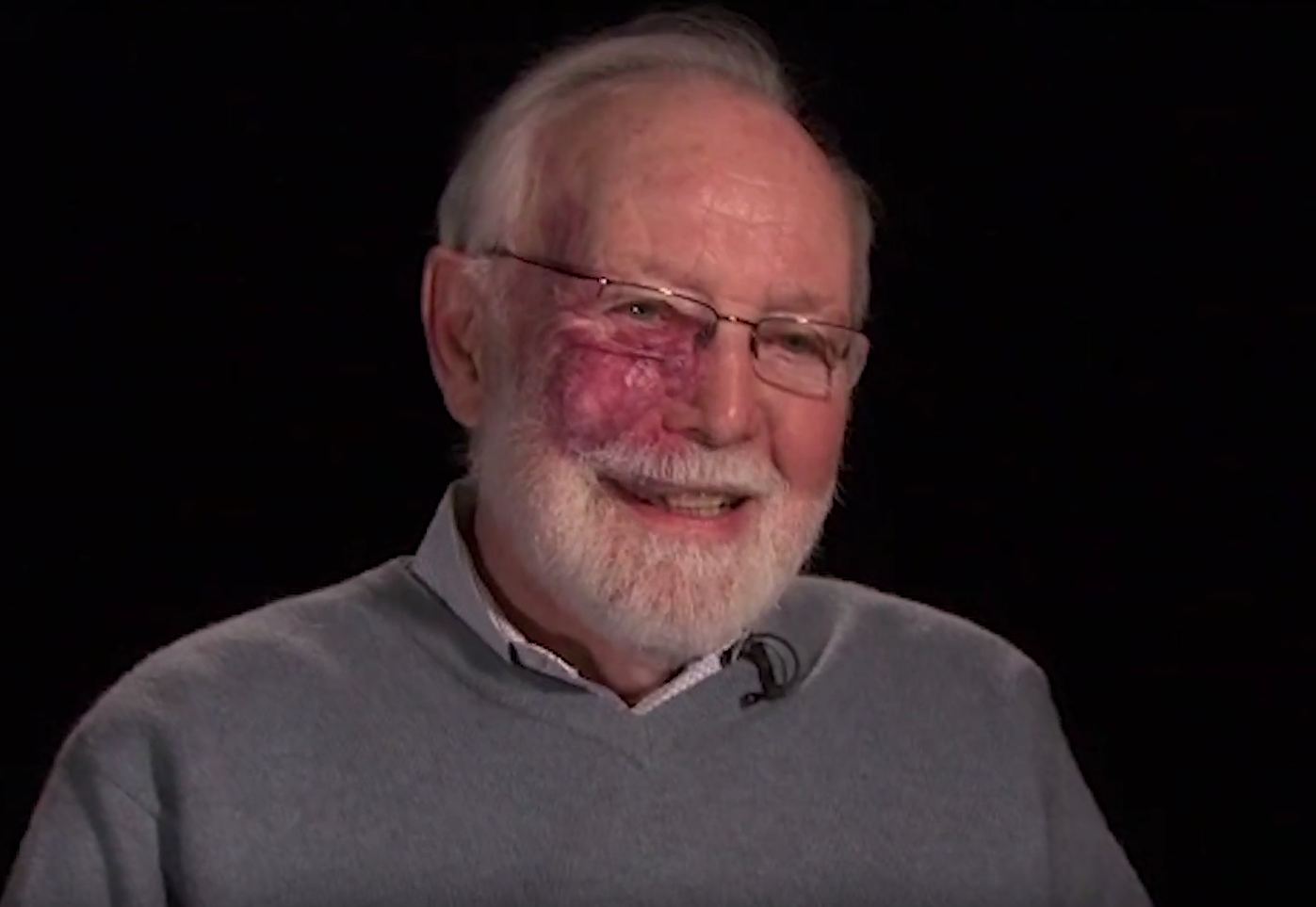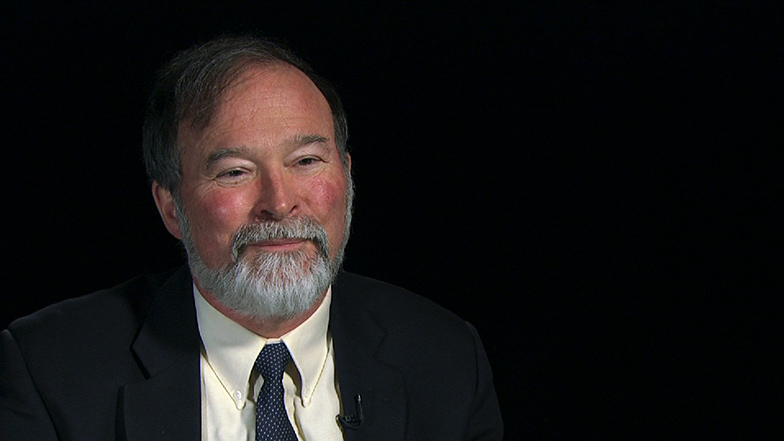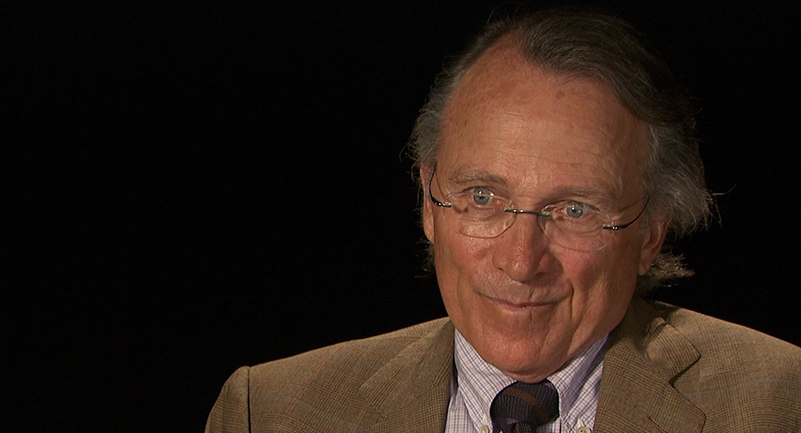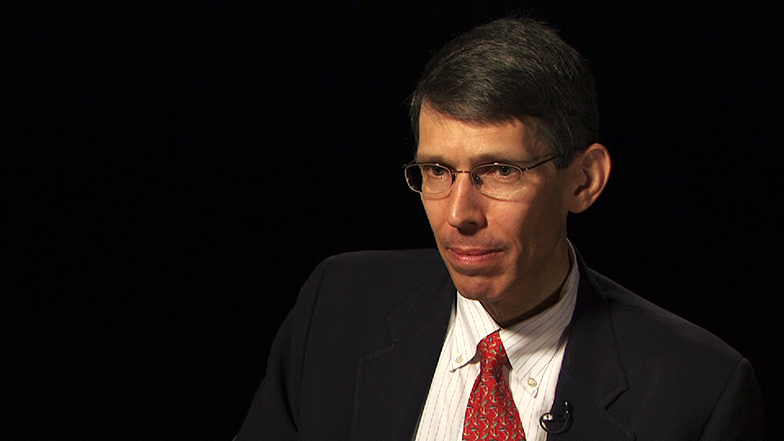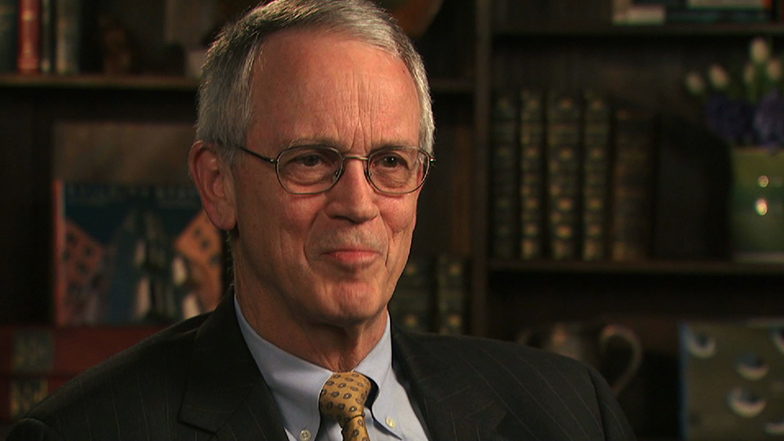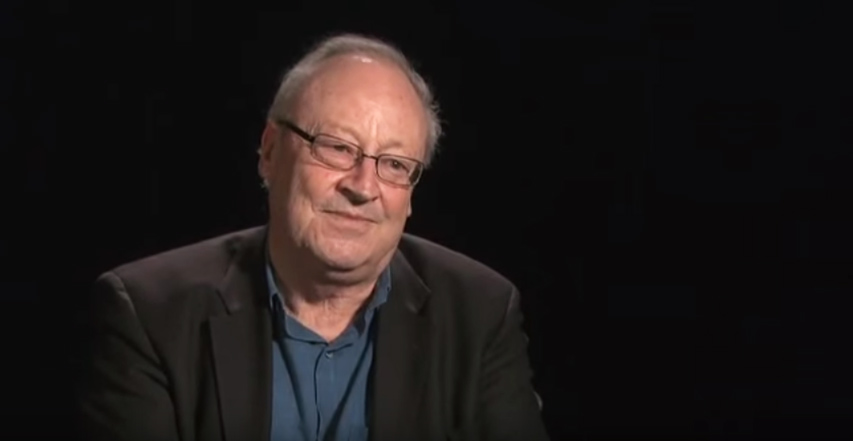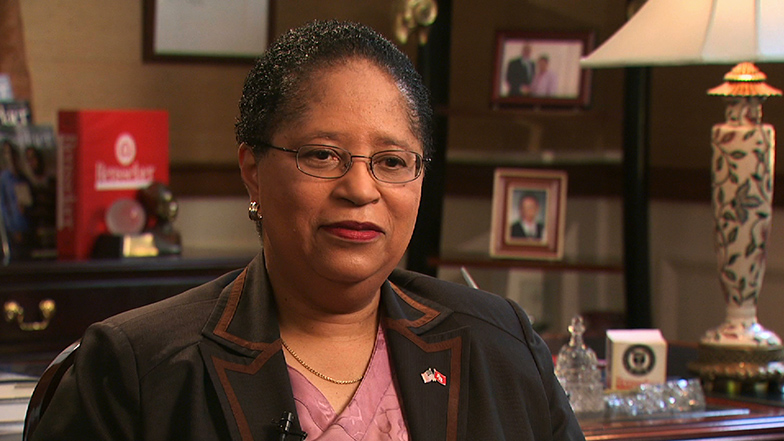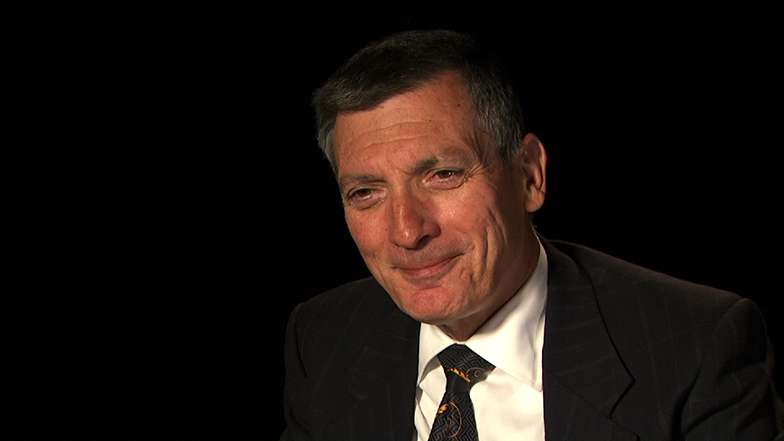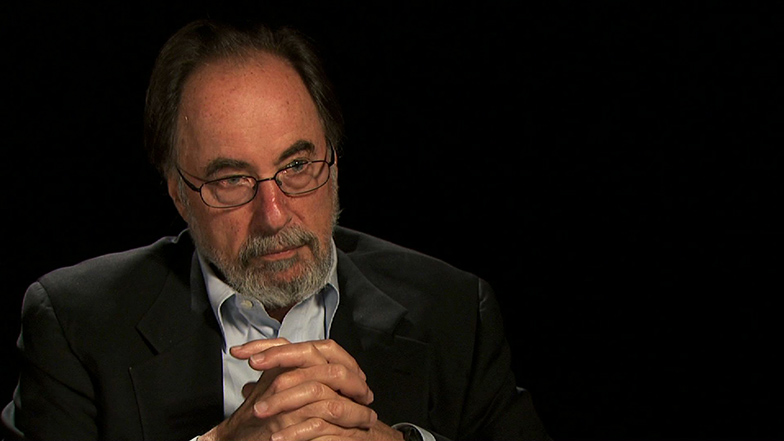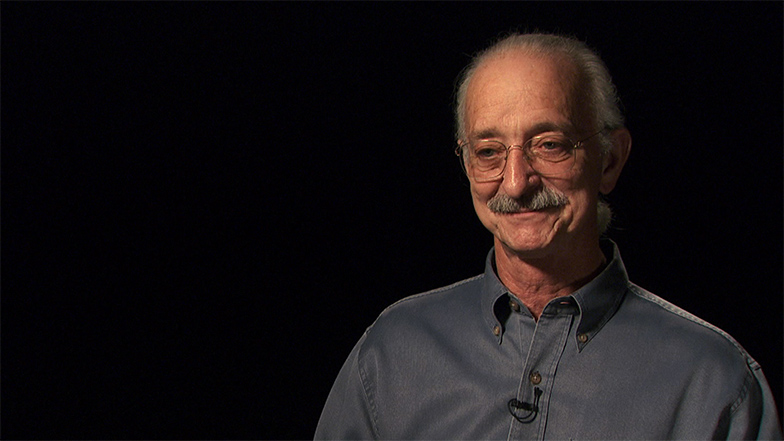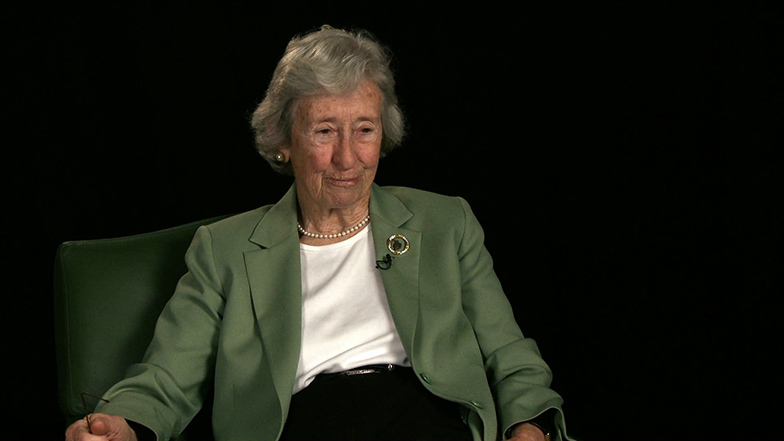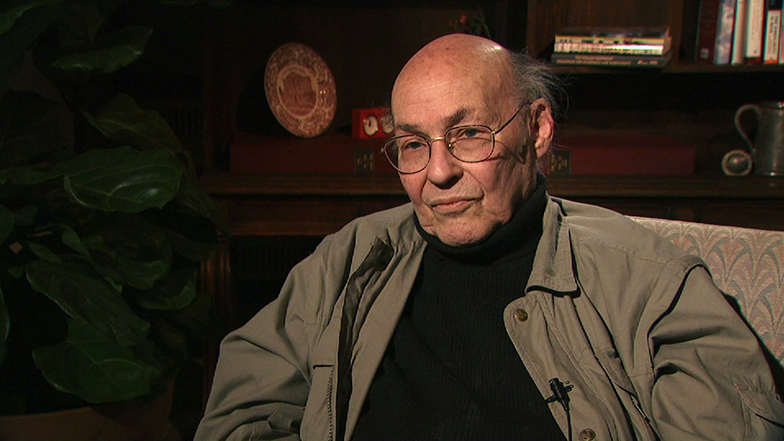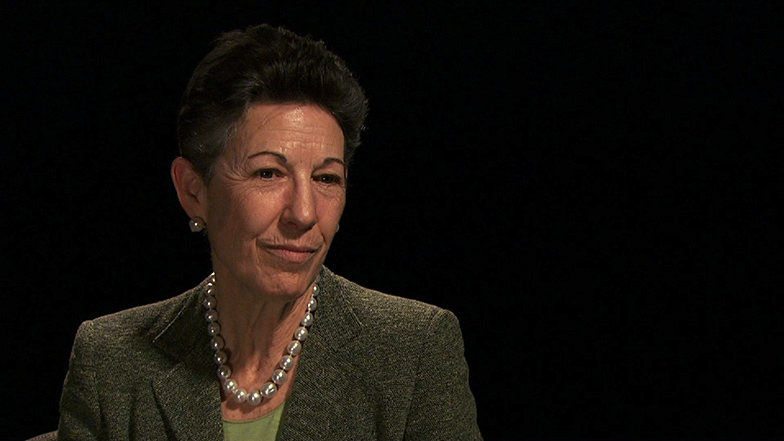Dava J. Newman SM ’89, PhD ’92
INTERVIEWER: So this is the 150th MIT anniversary interview with Professor Dava Newman. I'm going to start out by asking where you were born and where you grew up.
NEWMAN: I was born in Helena, Montana. So I hail from the Northwest and my family bodes from all over the Northwest, so Helena, northern California; I also lived in Seattle. So home is kind of the Northwest.
INTERVIEWER: Tell me a little bit about your family.
NEWMAN: My mom and dad were both teachers, trained as teachers, although they did various things. But I think that's where I really got some of my love and desire to perhaps be a teacher myself. They taught the K-12 level, and then my father was also involved in politics.
INTERVIEWER: Were there any particular influences or events or experiences in your childhood which you think helped to shape your career path?
NEWMAN: The Apollo program was happening in the 1960s, when I was a child growing up in Helena, Montana. So it was pretty inspirational for me to see the Moon landings, even though I was only five years old, I remember it very succinctly, being in Helena, Montana, the broadcasts of the Apollo 11. So that was definitely a pretty influential moment, and opened up my mind in thinking about space travel, what could be in the future. So, I would say definitely the Apollo program made some of the first early impressions on me as a child to dream, think big, and even engage with the possibilities of human space travel.
Also had some exposure -- my father was a pilot, just a private pilot. So I had a little experience in taking a few trips. It turns out, actually, my grandmother from my mother's side, she actually got her private pilot's license way back in the '50s, and so that was pretty phenomenal for a female pilot. Just for fun, but I think those also were influences in my future aerospace engineering career.
INTERVIEWER: So you've been genetically programmed.
NEWMAN: I'm not sure. Genetically programmed probably for exploration, that's for sure, and that's my passion and love is looking at exploration by space, sea, earth. So all of my research and a lot of my teaching focuses around exploration, human exploration, of the unknown.
INTERVIEWER: Were you always good in sciences?
NEWMAN: I liked science and math -- I love school. So, I liked all the different disciplines, but I didn't know that I would end up majoring or pursuing science and engineering in particular as a career. That came later after high school, and really not even until my undergraduate career.
INTERVIEWER: So why did you pick Notre Dame, or Notre Dame?
NEWMAN: So, Notre Dame. It was I guess maybe a little bit by chance, also a little bit by selection. I had actually never really, from a kid from the west, and the Northwest in particular, I really had never been to the Midwest, but I did look at Notre Dame. I compared it to some other schools, and particularly in Montana or the West Coast. I was keen on thinking perhaps about technical education, but in a liberal arts environment. So, when searching for schools, to get a liberal arts training, as well as then being able to get some technical expertise was a perfect fit for me.
Now, half of the story about Notre Dame has to do with my aspiring athletic career. I played a lot of sports in high school and growing up, and also, frankly, I needed fellowships to afford my college education. I had it self-funded, and so I thought I would really at least give it a give a try to play Division 1 athletics in sports. So I was on the basketball team for a few years at Notre Dame. I thought that I really wanted to both be able to pursue academics, as well as athletics.
INTERVIEWER: So, how was playing basketball there?
NEWMAN: Oh, it was great. My teammates were phenomenal. That was back in the early '80s, so women's basketball from Notre Dame, they had just become Division 1. So we were just starting to climb up. We did pretty well. We broke into the top 20, maybe the top 10, actually, as well as we did. I was only on the team for two years, then I started coaching at a high school. So then I actually started coaching at a high school, which was a great experience, it was with inner city kids. I'm sure they taught me as much as I could help to coach them and mentor them.
INTERVIEWER: Do you think the playing of basketball, did that influence your interest in body mechanics and motion?
NEWMAN: Definitely. Being an athlete myself, I also pursued ski racing at a top level during my high school career, to the point of the Junior Olympics. So, my whole sports career and basketball or skiing, I just loved all sports. It could be softball -- just throw a sport at me and I usually love to perform it.
Now, interestingly enough, there wasn't a real crossover to my academics until further along in my graduate career when I started specializing in human performance. So, the engineering training that I got, I thought it was a nice problem-solving, good skills, but it really came full circle not until graduate school at MIT when the biomechanics energetics, which ended being some of my specialties, even for an aerospace engineer, that really then was informed by my earlier athletic career. So it was really nice to find that synergy later on and at the level of my graduate studies.
INTERVIEWER: So tell me how you wound up at MIT for grad school.
NEWMAN: So, I looked at a few places for graduate school. I'd loved Notre Dame, I spent four years there. It was a great place to grow up, as I say. But I was really ready to get to maybe to the west coast. I lived at Stanford, looked down in Texas, and looked at MIT. It turns out that MIT had the best aerospace engineering program, and I was fortunate to get in, and even in particular, Man Vehicle Lab, which now I'm a faculty member affiliated with, was the perfect place for me. Because all of a sudden I found all these like-minded folks that were studying astronaut performance, human performance in extreme environments.
So I love spacecraft and aircraft, but I didn't know if I was going to spend my career thinking about the spacecraft design, if you will. I had worked for Boeing in the summers. My summer jobs were out in Seattle working for Boeing. But when I thought, wow, I can really study actually humans, human performance, apply my engineering expertise, but to more physiological musculoskeletal problems, that really was where my passion lied. So I knew I had found the right school in MIT, and the right research lab to pursue my interests.
INTERVIEWER: Do you remember what your first impressions were when you got here? What did you think of the MIT culture and the students? It must have been sort of different than what you were accustomed to.
NEWMAN: It was a really different culture. I distinctly remember coming to visit my first trip to MIT. I was very excited to come to Boston and see Cambridge. I was maybe a little bit intimidated, and I wondered are there going to be like-minded folks, are people all going to be nerds, and are they going to be well-rounded? Turns out, of course, in graduate school I met a whole bunch of like-minded people, and I met some of my best friends. So it all worked out. But that trepidation, maybe a little intimidation when I first approached MIT, I remember quite well.
INTERVIEWER: Do you feel like you could describe what the culture was like when you first showed up? How it was different than Notre Dame?
NEWMAN: So, the culture was quite different from, again, my liberal arts training with engineering on top where we might sit around over dinner and definitely talk about philosophy or talk about is there a such thing as a just war or not. So, those were very typical conversations we would engage in. I wondered well, at MIT what will I find out. Definitely, the conversations tended maybe to be more technical, more engineering and science based, which I quite thrived on, but I didn't have as much experience at, again, sitting at a table talking about maybe more of a physics problem.
Then I also found to my great surprise, a lot of folks that were still interested in, again, let's say more of the world problems and challenges and discussing these things over, usually over dinner or drinks. But then in the daytime, really spending the majority of our time in classes or in the lab focused on our engineering problems.
INTERVIEWER: So, can you walk me through your Master's and PhD here, and how your interests sort of evolved over that period?
NEWMAN: So, I came to MIT, first to pursue my graduate work and for initially my Master's in aeronautics and astronautics, and found myself just affiliated with a wonderful project. It was a project that was a space flight experiment. So I had the opportunity, really from day one, to participate as a graduate researcher in an experiment that was going to fly on the Space Shuttle. Now you never pinpoint your graduation date to a Space Shuttle experiment, because you may never graduate. That might be the world's longest Master's, let alone PhD.
So the experience was great. It turns out I did get to see that experiment fly. But during my Master's work, was affiliated with, it was called the mental workload and performance experiment. So we were looking at astronauts, and we were looking at their short-term memory, as well some of their anthropometrics and body positions, if you will.
Fortuitously, actually it was sitting in my first graduate course with Professor Tom Sheridan, who really taught me a lot, became a mentor, ended up becoming a member of my PhD, my doctoral committee. But it was in sitting in Professor Sheridan's class, kind of to the back row, I have to admit, with my colleague Mike Massimino who now is an astronaut. We're friends, and he was telling me about this wonderful Technology and Policy Program he was in.
Wow -- he was doing a dual Master's in mechanical engineering and TPP. It turns out, well, I wanted to do that. I was in aerospace engineering and I loved that. So I had joined the Technology and Policy Program. I had to apply and meet the founding director, Professor Richard de Neufville, and started that my second term at MIT. So from then on, I was a dual Master's student, pursuing both technology and policy, as well as the aerospace engineering.
A few years later, then I had gone through my doctoral exams and just pursue my doctoral work. My doctoral work was very multidisciplinary. Actually, it was interdisciplinary. I was housed in the Aero-Astro Department. But since I was pursuing biomedical engineering -- my PhD is actually in aerospace biomedical engineering. So, I was able to take some of the Harvard -MIT health, science, technology course work. As an aerospace engineer, I didn't know much about physiology, so I needed to learn more about physiology, muscles and bones. And my great mentor was Professor Tom McMahon from Harvard University, who had done his PhD work at MIT. So he was a real friend of MIT, as well as at Harvard. He was an incredible mentor for my doctoral work.
INTERVIEWER: Can you talk a little bit about -- you've mentioned two mentors now. How did they help you? Why was that such an important thing to have those mentors?
NEWMAN: My faculty mentors were critical in my development, and also encouragement. I was proposing, especially at the doctoral level. I had my own fellowship funding and I was proposing some grandiose ideas -- we have to figure out how astronauts are going to walk on the surface of the Moon and Mars. At NASA we weren't quite sending people, definitely not to Mars, but I really wanted to do something that no one had done before and to take a look at the bowel mechanics and energetics. I got a lot of support from my mentors in terms of intellectual support, and also just that maybe some of my crazy ideas were, I should pursue them and go forward with those.
So, the great thing about some encouragement, and no one ever saying no, you can't do that, that's maybe too outlandish or it won't be fruitful. I got some support, say go with your passion and try to solve some of these challenging -- ask the questions and then solve perhaps some of the challenging problems that we didn't really know much about.
INTERVIEWER: Do you think it's important for people to go out and find mentors for themselves?
NEWMAN: Absolutely. I think the whole mentor -- that's one of the reasons, one of the top reasons, actually, I became a faculty member myself. I think it does have to do with my background from athletics, the coaching. It wasn't that I was going to be the knower of all knowledge and stand in front and lecture. It was more engaging in teamwork and helping shape the next generation. I benefited from that, of course, from some of the mentors that I worked with, and that really gives me a lot of motivation to mentor students now in my faculty life at MIT.
To me it has more to do with coaching and steering, letting folks find their own voice. So, again, it's much more coaching and assisting along the way, and learning. The most wonderful thing about being an MIT faculty member is that when students have better ideas than I do, and we talk about them and we go back and forth. You kind of live for those moments really, again, that your students then all of a sudden become peers and challenge you and you challenge them, and we always come out with maybe better ideas and solutions then anyone would individually.
INTERVIEWER: Since you were here as a student and then you became a faculty member, can you talk a little about the difference between being a student here and a faculty member?
NEWMAN: Sure. I got some great advice by Dave Akin, a former chair of my doctoral committee, who's now at the University of Maryland. I think I was struggling with some of my PhD work, and he said, "Don't you want to be a faculty member?" And I said, "Absolutely, that's what I'm doing all this hard work for." He said, "OK, well, let me tell you something, when you're an assistant professor, you're never going to work so hard. You're going to look back on these PhD days and think they were great." He was right. The multitasking, multiplexing. I was a doctoral student here.
My first faculty job was down in Texas. So that was actually really great for me to leave the MIT environment to go to a big state school and have to develop my own courses. It was in a mechanical engineering department and I was hired to bring in some of the aerospace components. I was close to the Johnson Space Center in Houston, Texas.
So working on that new curriculum and design was a great experience for me. I really moved for personal reasons to be with my sweetheart and partner, so it was great. So it was a good personal move to go to Texas. It was also a good career move because that was my early, let's say, formative -- to get your PhD it's one thing. But then the next thing you know you're a faculty member and you're having to teach all the material. And the multi-tasking, if you will, because you're teaching, you're pursuing research, you're putting in proposals, and you're advising and mentoring students, both at the undergraduate and graduate level. So there was a lot to learn in the first few years of being a faculty member.
INTERVIEWER: So how did you wind up moving from Texas back to MIT?
NEWMAN: Well, I have to thank my partner, Gui Trotti for that, because he said he would make the move back to New England. The MIT environment was so wonderful -- stimulating. The students that you get to work with are the world's best, as well as the colleagues. So, it was really the people and the intellect and the challenging questions and solutions that I thought maybe we could work on was what really drew me to come back to New England and to MIT.
INTERVIEWER: Did MIT approach you?
NEWMAN: They did. I had a faculty offer, but I said, well, I'm going to go down to Texas, also for personal reasons, as well as career. So I had an MIT faculty offer. You get different stories depending on if I tell it or if Guy tells it. The phone would ring and say, hey, are you coming back to MIT? And I said, well, I don't know. It worked out well. I did come back.
INTERVIEWER: So let's talk about what your research and career has focused on. Probably the best way to do this is maybe if you could just sort of talk to me -- walk me through the progression of your interests.
NEWMAN: OK. And you can tell me when it's -- I'm sure it'll be too much or enough. You can tell me to be more succinct. Feel free.
In my research, the overarching goal is really to try to assess human performance across the spectrum of gravity. So for space flight, I start with a micro-gravity environment where the astronauts are floating freely around, and we take a look. As an engineer I try to quantify their performance and model it. Then we perhaps come up with better understanding, and that leads to even better designs for things like spacesuits or inside, in terms of IVA, Inter Vehicular Activity. So really trying to first quantify, model the astronaut performance.
But again, as I mentioned, the spectrum of gravity. So I go from micro-gravity, zero gravity, to the Moon and Mars are 1/6 and 3/8 gravity. So how does humans perform in these partial gravity or reduced gravity environments. It kind of goes full circle all the way up to 1G -- those are more my Earth applications and more of my biomedical engineering.
My biomedical device research work is, of course, here. It has applications for 1G. Currently, I have a very interesting project kind of miniaturizing a -- putting on a wearable technology and assessment, if you will, quantifying the kinematics, or the motions. All of that to assess children with cerebral palsy. Can we use some of my spacesuit design work to kind of shrink it down. Can I make a great little suit or pants to assist in locomotion for kids here on Earth. So it really goes from the space environment to the 1G environment.
So, again, overall I'm really trying to look at human performance -- adults and children now, across the spectrum of gravity.
Research I can break down the research. So the major themes of my research have been looking at astronaut performance in a few different ways. Some of it is actually just looking at musculoskeletal deconditioning. We have very significant musculoskeletal deconditioning for astronauts in long duration, meaning multiple months in the micro-gravity environment. So the International Space Station, and before that, the Space Shuttle. And I also had the chance to fly my experiment with the Russians for two years, from 1996 to 1998.
So, a few decades of looking at astronaut performance in this beautiful micro-gravity environment. What do we learn? Well, it's a great laboratory. It's a very extreme environment. We have significant musculoskeletal loss. So, again, as an engineer, can we model that? Can we quantify it? Can we look at what the mechanisms are? If we can understand it, maybe it will really tell us a lot about osteoporosis on Earth, about exercise devices, exercise suits. So it really all has to do with the health and performance and safety of keeping the astronauts alive, but there's always another application for here in 1G, if you will, in Earth applications.
Then, another major area of my research focus has been in design, engineering design, and my teaching and research. I've taught a lot of engineering design to freshman, all the way up through seniors and graduate students. That kind of informs a lot of my spacesuit design work, advanced spacesuit concepts. I do spend a lot of time with the current technology, the current NASA /Russian technology. But then we push the envelope. We think that's our job here as faculty at MIT to really think of what could be, in 10 years, 20, even 40 years out, what breakthroughs could we see in engineering and science? How do those come together to maybe provide completely new systems.
So a lot of my advanced spacesuit work then really is a nice example, I think, of human robotic cooperation. I have a life-size robot in the lab, and it acts as a surrogate astronaut, if you will. So we're always thinking about kind of designing advanced systems, and that's led to one of my favorite research projects is a Bio-Suit or a spacesuit for Mars missions of the future.
Then another area, say a third other major area of research for me, is more to the biomedical devices and the 1G applications. Again, I love to look at the human performance, astronaut performance in a lot of cases, but it can just be human performance across this whole spectrum of gravity from micro-gravity all the way through one gravity. I haven't spent a lot of time thinking of high gravity in terms of we haven't gone to Jupiter yet where we have to keep people healthy for 9Gs environment. So kind of keep it from the zero to the 1G for all intensive purposes, at least for now.
INTERVIEWER: It's a start.
NEWMAN: Yeah. We're not going to send humans or astronauts to Jupiter any time soon.
INTERVIEWER: So when you're doing your research into these different but related areas, are you kind of working on all of them at once? Does it wind up blending all the time, or are you really sort of down different paths?
NEWMAN: It's a little bit of both. They end up blending a lot. I also like to work with students. The students, of course, need their individual thesis work or their individual project. But the students I work with are always in teams. It might be a team of two, counting me, three. Or a larger team of six or ten people. So it depends. But I think we all learn a lot more by working together, and that's the definition of engineering. A lot of smart people there to try to solve problems, kind of come up with new designs of systems. So all my projects, even though they're a little bit specific to the application, if you will -- it might be micro-gravity or a system for International Space Station, or it might be Mars spacesuit design. But they can really inform each other quite well.
And then with some of the biomedical devices work, that is also informed by some of the space work, as well as in just the passion to help with the enhancing performance or assisting locomotion here on Earth. So, they're best suited if the students and myself, if we're working across and working with each other across the programs, as well as then kind of drilling down deep into some of the specific hypotheses and research question. It's all informed as well with, not just my teaching, but educational research. I perform I think it's also a nice a bit of education research. Right now I'm at NASA grant for education and outreach. So we also take that cut at it, if you will, from our MIT research that we're publishing journal paper on, but we're also trying to disseminate that, if you will, and look at outreach for K-12 education. And come up, actually, with some educational tools and understanding for the general public or for kids. This specific project now is targeted to science museums and children's museums.
INTERVIEWER: It must be kind of fun when you figure something out in one location and you realize it has application to other areas you're working on.
NEWMAN: That's great, and that connecting the dots or how a breakthrough, say, perhaps in our Bio-Suit work, the patterning and the design, how that might be applicable to a system, applicable to kids with cerebral palsy. So those ah-ha moments are great, but it's usually just a lot of hard work. A lot of Master's theses, a lot of PhD theses. And then perhaps when I'm running around the Charles River saying, wait a minute, something that we've been working on might be completely applicable to another area that we also think that we could contribute or come up with an enhanced solution or even an enhanced design.
INTERVIEWER: So collaboration is a very important part of your research.
NEWMAN: Absolutely. It's all teamwork. It's collaboration, of course, with MIT students, undergraduates, graduate students, faculty, and then quite a few collaborations external to MIT as well -- other universities, and internationally as well.
INTERVIEWER: What are your thoughts about collaboration within the MIT community?
NEWMAN: It's great. One of the best things about MIT is the research collaboration. Of course, we have our specific department, but you can do research projects -- research projects, really there's really no walls. You knock on someone's door from whatever department. I found that to be really special. That's really kind of magical at MIT in terms of really being able to do the multidisciplinary work.
If I need an expert in, and have a question about what's the appropriate materials and I run over to a colleague and get their students, as well, to interact with my students from aerospace. And that extends all the way to architecture and design, as well as humanities, arts. So the appreciation of--. And so we can really put together, I think, fantastic multidisciplinary teams of researchers just with pretty much asking and getting people to join up to a team. I think we can really produce very different results with multidisciplinary collaboration.
INTERVIEWER: That seems to be something that's quite specific to MIT.
NEWMAN: I say it's kind of the magic, I think. And it's not unique -- other folks are trying to do. It's not always easy to go across disciplines. Because you're trained, especially at the doctoral level, you're trained pretty deeply in one discipline. But now the world's challenges are just too vast. Whether it's water or energy or climate or exploration, in my space. So we need to put together I think people that are trained in different disciplines and come up with more creative solutions. Take a little bit from this field, a little bit from this field, a little bit from this field, and maybe we'll come up with a really powerful idea, let alone solution or a new design that we might want to try.
INTERVIEWER: You did undergo space training, did you not? Could you talk about that?
NEWMAN: Sure. So, all my students want to be astronauts. I have a lot of colleagues and friends that are astronauts. And now that the students are joining the ranks. Myself, I never applied to the astronaut core, but I've had the great pleasure to fly three experiments into space. So that the training that I've had myself is I've flown quite a few times on NASA's parabolic airplane. It used to be NASA KC-135, now we have the NASA C-9. I've also flown on the Russian aircraft, as well as the commercial zero G plane. So, essentially, we're flying up into the sky, going about 45,000 feet, dropping 10,000 feet, and you really do get micro-gravity or zero gravity parabola -- you do for about 25 seconds.
Now the thing is you do this over 40 parabolas. You get a couple hours of literally micro-gravity. Then a 2G pull-out. The 2G pull-out is the one that makes you not feel so well. You go back up, so within 20, 25 seconds you have to take your data. We test out our systems. You can fly lunar trajectories, as well as martian trajectories. So I've flown dozens and dozens of flights, and again, at these 40 parabolas to test out our systems, first of all, and also gain the experience. We can't get rid of gravity on Earth, so flying the micro-gravity parabolas or the partial G parabolas is one that we truly get the right gravity environment.
Now here in the lab, we hang people from the rafters on my moon walker to try to simulate. We go under water, again, to simulate altered environments. Now there's opportunity for some commercial space flight training, since we're on a new era of commercial flight. So we might have been guinea pigs, let's say, in terms of putting scientists and engineers through what's called NASTAR training for flight training. So a lot of high G training, some physiological training, and going through this. Because in the future we see not just the NASA or European or Russian astronaut cosmonaut core probably really opening up space fights at least to low Earth orbit with a cadre of people.
So they're trying to figure out what might be the appropriate training. So, I got to join the first class of scientists and engineers to kind of go through some of that training. As I said, for the experience it was great fun, and also to give feedback about how they might tailor the experience for certain people, especially if you're dealing with a technical crowd or what might be the best training, the most useful training and experiences. So it was pretty fun. We did a lot of high G training and centrifuges, as well as different fight profiles, and as I said, understanding a lot of the physiological responses.
INTERVIEWER: Did you feel like Neil Armstrong?
NEWMAN: I don't know. Maybe in some sense. I don't think we're not the right stuff. Mentality anymore now it's just kind of exploring, and really the great opportunity of thinking of many, many people experiencing and enjoying the wonders of micro-gravity and weightlessness.
INTERVIEWER: Did your stomach get used to it?
NEWMAN: It does get used to it. That's the right question. Your stomach gets used to it when you're going through this. But I'm susceptible to actually seasickness. I'm a big sailor, so it's really one of our passions is sailing. So again, you get used to it. So initially I'll have a little bit of stomach awareness or sickness. But everyone adapts, so you just plow on through. You're there to really get the research done and get your science done. And the more focused you are and the more you have to do, I think, is better, so you don't let the stomach get in the way.
INTERVIEWER: Is there a particular combination of characteristics that makes aeronautical, biomedical engineering of particular interest to you?
NEWMAN: For me the aerospace-biomedical, we even call it bioastronautics. It's kind of a mouthful: aerospace biomedical engineering. But it brings together, again, so many wonderful aspects -- the problem-solving, the skills, the many skills for engineering analysis. But for me it brings in the human element as well. I study people. That was really critical for me. The human is always in the system, in the loop somewhere. So I just kind of have the pleasure to study specifically human astronaut performance.
So really, the engineering skills from aerospace, and aerospace for me is, again, my passion is, it's extreme, it's the future. This sounds cliché, the final frontier, but there's so much we can learn in the unknown. So for me, again, it's not just space, also underwater exploration. We have so much to learn about undersea exploring, the seabed, exploring the animals. And in all of our exploring, I'm sure we learn probably more about ourselves as well. So for me, the passion is really in bioastronautics, now it's moving a little bit more to some Earth applications, some undersea applications. But it's really to explore the unknown.
INTERVIEWER: It sounds like it's being at the edge or the frontier.
NEWMAN: Yeah. I'm definitely comfortable, maybe it's good to be uncomfortable at the unknown or at the edge, to try to look beyond the horizon and try to discover even a new question, let alone perhaps a new answer or solution. I think it's in the human spirit. We're always trying to push the edge, and even though it might not be a comfortable place. The excitement is any kind of breakthrough or anything we learn. And again, kind of bringing that back then to maybe an Earth application.
INTERVIEWER: So, I'd like to go back a little bit to talk a little bit more about teaching. Do you have a philosophy of teaching?
NEWMAN: So, I definitely have a philosophy of teaching. Try to keep it simple. So my philosophy for teaching and research, which are just completely synergistic activities in my life here -- sometimes I'm in front of the classroom, other times I might be in the lab or mentoring students. But my teaching philosophy is simply love, act, discover and innovate. So if we put all those together, each part of it, and kind of have this continuous journey, if you will, I think those are all the ingredients that we need.
Me, in my teaching of students, as well as in kind of a philosophy for the research activities as well. You have to be passionate. You have to love what you're doing. There's no I'm an engineer, so there's no substitution for getting your hands dirty and acting and really coming up with designs or prototypes. The discovery is I think what all scientists and engineers are about. What's the new discovery? What's the wow? And then the innovation and creativity goes right in there. What's a new, what's a breakthrough? A lot of hard work, but then also just trying to maybe solve, even if it's an old problem, maybe try to solve it in a new way.
INTERVIEWER: Would you characterize yourself as sort of a hands-on teacher? Do you like getting your students active in projects?
NEWMAN: Yeah. I'm definitely a hands-on teaching. I use a lot of active learning in my classes, whether it's freshman designing and building blimps and flying them, designing ROVs. It really is looking at engineering education, but in the context within the aerospace department -- we call that conceive, design, implement, operate. So there's the paper design, if you will, the conception, the design. But there's no substitution in the learning of implementing all the systems. For aerospace engineering we're always dealing with complex systems, and so all of the subsystems have to interact and work together. There's also no substitution for getting them to operate.
So even if we simplify it, say at the first or second level, to fly a blimp or go underwater, we just kind of progress through that. Then with the graduate students, I greatly enjoy getting to more advanced, more complex systems. But again, it's really still hands-on, no substitution for the theory -- you have to know the theory and the foundations -- but then let's put it in practice. For our work, work is primarily sponsored by NASA, and now the National Science Foundation. They're also looking for results and systems. Since I'm in engineering design space, we really do come up with prototypes or mock-ups of different working systems.
INTERVIEWER: You also teach a leadership development course. Tell me a little about that.
NEWMAN: It's actually been my pleasure, and just in the last five or so years with the Technology and Policy students to teach the Leadership Development Seminar. I've been at MIT now almost two decades as a faculty member and I love it. But if you ask me what are the things we need to work on. Community and we worked on a lot over across MIT, and really instilling that sense of community and pride that we're all MIT, we're all in this together, and we're kind of greater than the sum of the parts. So I think instilling that community -- I'm a house master, so I live in a dormitory. So kind of practicing what you preach as well, trying to enhance community.
Back to teaching leadership, really our students are the future, and they're the future leaders. We have a lot of -- they are, but we don't want that to be by happenchance, we want to make sure that we're giving all the opportunities. Can you teach leadership? I'm not sure. But what you can do for sure is give opportunity for skill development, for personal development, for teamwork. And just even studying the literature. The literature in literature I find very fascinating from Lincoln on up to contemporary.
There's all different types of leaders. So I've actually myself gone through the Sloan leadership class to learn their distributed leadership model. So again, maybe I'm just spreading the word a little bit from some of the scholars in leadership, some of the folks who are in the Sloan School of Management. I'm trying to also make sure that the engineering, the school of engineering, and our students have those opportunities. Again, you can talk about it, you can read the literature, but there's no substitution in my mind for getting out there and doing it.
So, for instance, the very first session that I had with my Technology and Policy students, it's we do -- I call it the leadership laboratory, because we go to Thompson Island and we're in a high ropes course, and there's nothing like instilling trust when you're there up repelling back and down. You're learning a lot of lessons of teamwork and trust, and communication is really important. Then the reflection. Maybe the activity didn't go so well. Well, why not? So I think that that's also very much a hands-on activity, as well as learning from great leaders in the past.
Then it's personal as well. So my final project in the Leadership Development Seminar for the students is to come up with their own leadership plan. I have one for myself, you need one for yourself. And what are the characteristics and the skills that you really want to work on. So that might be their two-year plan in Technology and Policy, it might be their six-year plan for their PhD, it might be their 10-year plan.
INTERVIEWER: What do you think those characteristics are that make a good leader?
NEWMAN: It's fun to discuss and debate. I have the students boil it down to less than 10 kind of characteristics of the great leadership. So everyone has their own, but some of that, again, my personal list of characteristics of leadership, love comes up right at the top, the compassion, the passion itself comes up. Integrity would be very high on the list. And so you put in the different -- I can go on and on with the list if you want.
One of the first assignments I have the students read is Norm Augustine. He has a very nice, a short kind of brochure, if you will. Norm Augustine's a great MIT advisor, if you will, and has Augustine law. So anyhow, Norm has a great template, I think, for leadership and comes up with 10 characteristics of leadership, mentioned a few of them. And so just thinking about that and putting in our own. You can have a list of 20 easily. But I think that it's a really good exercise for students to come up with six or 10 leadership skills, if you want to call them that, also leadership characteristics that they might have some strengths in, but they need to identify their weaknesses as well.
So what are some of the characteristics that they really want to work on. Lots of times listening comes into that. It's not always leadership from the front, definitely not the one who has maybe the loudest voice. It's who can build the team. Who can listen, who can synthesize some of the information and look at the team dynamics. So a lot of it's listening, reflection. See, these are some more of the subtle characteristics or points. Making sense of the whole environment. Then there's some that actually are inventing where it gets to the innovation, it gets to the creativity. It gets to the novel ideas.
INTERVIEWER: MIT is particularly good at generating leaders. Why do you think that is?
NEWMAN: Everyone wants to know why MIT is so great at generating leaders. I think first of all, you have to say we get incredible students at the undergraduate level, the graduate level. So we get great -- and hopefully we don't do too much harm and when we get great leaders that emerge. But also there's the time here. I think the development of students here on campus has something to do with that. MIT's a place that people don't say no. You have the craziest idea. We just thrive off of each other's intellect and ideas and maybe different approaches to a solution.
So you put those kind of people together and I think that you do actually create a really unique environment for leadership. Again, I call it distributed leadership, because it's not just the one person leading. It's much more of the teamwork and the group dynamic, and leaders that the Sloan calls the distributed leadership model. That's really important, because everyone has skills in different areas. So it really probably takes a team to perhaps lead, to be a term project for the student. It could be to lead in the development of a new business.
Now these are not usually individual actors. It might be small teams, but it usually is teams of people. Smart people coming together to lead in whatever endeavor -- maybe it's a new start-up, maybe it's to lead some curriculum reform. We've had a lot of innovative educational reform and ideas come out of MIT, too. And as you get some of the faculty together that want to look at pedagogy, want to say maybe we can -- we're doing things already, but we could even do it better.
So it's really also never being satisfied with what we're doing today, because you can always think about maybe we could do it better, we can improve things.
INTERVIEWER: Are you still using the Gauguin quote?
NEWMAN: Yeah.
INTERVIEWER: How did that come about? What is that? Tell me why?
NEWMAN: So for my leadership course, I guess the motto, if you will, of day one of the class, I put a picture of Gauguin's masterpiece: Where are we from? Who are we? And then where are we going? I think that those three questions are so important for life. I think they're also, I use them as a model for leadership development, because the past, the present and the future, and you can look at it individually for yourself, for your internal improvement and development. And you can also scale that to a society or a group of people.
So I think Gauguin was asking the absolute critical questions, and then putting on his artistic answer that he had to that, or at least making us think about these questions and maybe offering not the definitive answer, but playing around and experimenting with past, present and future that really guides what I think is a great foundation to think about leadership, and individual as well, as I said, maybe societal development. Pretty profound questions.
I'm also really interested in how technology, engineering and science are influenced, as well as can contribute to the arts. So I am also just personally kind of very interested in this synthesis, if you will, of art and design to science and engineering. I think that we have so much to learn from each other. So I really love to think about how we can all be influenced from our specific expertise or our disciplines, but really sharing some. I think art has a lot to contribute to science and engineering as well has a lot to contribute. I would put design as the fourth. It's really art and design, to and science and engineering that's spent a lot of time thinking about what are the synergies that we can all think about and maybe attain, and really improve our own scholarship and our own work.
INTERVIEWER: So, I'd like to ask a little about being director for the Technology and Policy Program. What is it about that program and the collaboration between MIT and Harvard that works so well?
NEWMAN: For TPP? For HST there's more--.
INTERVIEWER: Yes. I'm sorry.
NEWMAN: Which one? For TPP or HST?
INTERVIEWER: Let's talk about Technology and Policy first.
NEWMAN: OK. Because that one's more MIT grown. But OK.
So the Technology and Policy Program, I've had the pleasure to be the director over the last six years. I did get my Master's in Technology and Policy as well. So I'm an alum from the program. Professor Richard de Neufville started it in the 1970s as really one of the first multidisciplinary curriculum offerings for the graduate level across MIT. It was tough, a little bit tough back in the 1970s to have those ideas that engineers and scientists should also be educated. Maybe not experts, but definitely have the breath in economics and political science, and really looking at some really tough questions. What are the societal, political and economic implications of our technology? Of our science? And I think those are the right questions.
Fast forward to 2010, everyone, all the national reviews from the National Academy of Engineers say if you're training engineers, of course. So now it goes without saying that we need to develop engineers as world citizens. They have to be thinking about the societal implications of engineering. The economic implications, the societal. But it wasn't too long ago when those were actually not seen -- the engineering education, science education was very disciplinary oriented. So trying to break that open. And we like to think about it in TPP as dual excellence. We provide deeper graduate education in engineering and science for the students.
But they have to also crossover, they have to at least become familiar and be able to talk to an economist, a political scientist. Because, frankly, when we look at it and we look at Washington or any of the cities -- the leading cities for government, as well as both public and private, we're the failures. The failures are usually not in the technology -- it's usually in the people or the systems. It could be the policies behind them, it could be the silent implications. So we really think we have to take a multidisciplinary approach to solving the most challenging problems of the world.
So this education, I'm just a huge believer in more of the breath, more of the multidisciplinary. It doesn't short-change the engineering or the science, you have to be expert at the graduate level in your area, but you also need to be open-minded and look at all the other influences. And frankly, some of the policies -- we have a law requirement. I mean I want my engineers all to be able to talk to lawyers. They don't have to be lawyers themselves, but it, frankly, could be quite a different language, if you will, a different culture. So you have to basically try to step in the shoes of someone else and understand, perhaps, where that expert's coming from, whether it be the economist or the lawyer.
So I want to train engineers and scientists who are actually very comfortable in the shoes of others, so that they can really come up with, again, what is our mission is engineering and science for the betterment of humanity. So if we're going to put technology and science in place, we really have to know the societal/political implications of our engineering and science.
INTERVIEWER: Is there something you want to say about the MIT-Harvard history-science.
NEWMAN: I've been an affiliate faculty with the Harvard-MIT Health Sciences and Technology, or HST Program, for most all of my career at MIT. I can't say enough about it. Half of my graduate students, half of my doctoral students have come through HST. They want to be biomedical engineers. They get incredible engineering training here at MIT -- we don't have a medical school. We have a great collaboration with Harvard in terms of the PhD students in the medical engineering, medical physics get the equivalent of a couple of years of Harvard Medical School.
Now some of them go on to get both the MD and PhD. Now that's a really long, long journey into graduate school. But it's a really great program. I love to see Harvard and MIT working together, and the facilities are fantastic. We think of doing the real high-end engineering work here at MIT, and we really benefit from some of the clinical training and also looking at the medical training and coming up with collaborations and synergy. That training, I think, is really the way to progress to biomedical training of someone to give them that experience from what both schools really have to offer expertise in.
INTERVIEWER: How about the bioengineering program, the MIT-Portugal collaboration.
NEWMAN: So it's been a pleasure to be one of the faculty leads for the MIT-Portugal program. I lead the bioengineering systems effort. We're just finishing the phase one and we're just getting into our fifth year of the program. We've established eight new PhD programs in Portugal collaborating with their universities. So we've really gotten to know very well new collaborators, new faculty among all of Portugal's -- most of the Portuguese universities are participating. So it's a great throughout the whole country activity. And then teaming them up with MIT researchers.
So, we've started the new educational programs in Portugal, they're Portugal academic program. And then the students in terms of the research, they have the opportunity to come to MIT as visiting researchers and perform some of their research in our MIT lab. We've also had a number of Portuguese faculty just in bioengineering systems. 15 Portuguese faculty come, we kind of call it teach the teacher model where they come, they're in our courses with us, they're learning and working with as much as they can.
Then they go back to Portugal, and within the appropriate cultural context, do something like offer an innovation teams course. We call it bio-teams in Portugal. In my lab we're looking at human and robotic interaction and biomedical device design. So then, again, going back and connecting with a small start-up industry and what devices -- again, can we think about, not just for Portugal, but for Europe. So it's a very collaborative, I think successful, international collaboration. It's MIT's largest activity within Europe. So educationally too, personally I'm very interested in seeing where Europe's going in the future with education.
So this is a great experiment. We're running the experiment, we've learned a lot, we've done some things right, we have some things to improve on, but it's a great experiment that we're running to look at the future of education, the future of graduate education in this aspect that touches on engineering systems, complex systems. Then I've had the pleasure to work and lead in the bioengineering systems area.
INTERVIEWER: I have this sort of list here about your roles and responsibilities and the research that you do and the MIT-Portugal program, and the five courses, and Technology and Policy Program, and the house. Do you want to talk a little bit about balance and how you--? How do you do this?
NEWMAN: I'm not doing a great job at repeating your questions, too, so please, if you need me to--.
INTERVIEWER: OK, you're doing a quite good job.
NEWMAN: OK, so just stop me if you want me to repeat it, please.
So life for me is busy at MIT. I am juggling a lot, but throw myself 100% into it. Gui and I are house masters at Baker House. We've just completed our fifth year, we're going to jump into the sixth year. So now I feel like I understand our undergraduate students much, much better than I ever did in my first 15 years of teaching. It's one thing to be in the classroom, and even in the lab working pretty closely with students. It's another thing to live with 330 students, and it's actually really our great pleasure. That's how you get to know the students 24-7. And most of the learning, let's face it, probably doesn't happen in my lecture room. It happens with the personal interaction, the student-to-student interaction. All of the activities that they're involved in and teaching each other.
So, we're witnesses to that. We're witnesses to living with our undergraduates, trying to help them if they're struggling through -- we're kind of the academic connection, if you will. The faculty house master, they're a little bit of the academic connection to campus, but then also just trying to, again, mentor, create opportunities, give them a little bit of guidance if they need it, if they ask for it. And living right there in the dorm with them is really a special opportunity for us. It definitely keeps us busy, it's our nighttime job here on campus. We negotiate with the students -- we usually have meetings from around 10 pm till 11 pm So we have to, you know -- they want meetings after that. We say no, we have to go to sleep. We get up at 6 am for the next day's work.
They keep us really active. A lot of it is even informal. We have Tuesday dinners, we have dinners down in Baker dining, and that's really just to sit around the table and talk about whatever they'd like to talk about. It might be some career mentoring, it might be looking for summer opportunities, it also might just be about world activities. We really engage. It's definitely not about the solution to their problem sets -- that's forbidden. Because that's not what we're there for. We're there to engage in, again, thinking about what they're interested in, painting the picture for their future, for the world's future. Again, as engineers and scientists, what are some of the challenges that we should all be embarking upon. So those are the wonderful hours that pass associated with being a house master in Baker House.
INTERVIEWER: I'm interested in hearing more about what you've learned by living with the students that you didn't learn in those first 15 years here.
NEWMAN: Living with students, you're just part of their daily life. And so seeing the great joy and success. It could be anything from, again, acing an exam, to getting into graduate school, to becoming that Rhodes scholar, one of our recent students. So you just beam, you just celebrate the success of the students, and they succeed every day in these wonderful things. So also, trying to support that. Again, that's the community building -- that's a really important part. A little pat on the back. MIT is such a rigorous -- a lot of people say you're breathing from the fire hose.
But let's take a little bit of time to reflect. Our students are wonderful, they're superstars, but they need to hear that a little bit. Because in some sense, maybe they're fragile as well. The pace and pressure here are pretty extreme. So it's also trying to reach a balance, if you will, trying to make sure to get the priorities and actions, the people, and the experiences that they're having here, and hopefully getting help when they need help, and not getting completely overwhelmed or stressed out. So that's a lot of our role, and just keeping our eyes and ears open, trying to support folks in all the ways that they need it. Celebrating with them -- that's the big joy.
Then we're also there, too, also -- it's not all wonder and glory and celebration, there's also difficulties. They run all kinds. So they could be academic, also, too, college kids make mistakes. We just have to make sure they're in a safe, productive environment, and also that they learn from their mistakes. So there's that end of it as well. There's a lot of teaching moments. Shall you say, you look for those when you're lecturing, there's a lot more teaching moments when you live with the students in the dorm and you spend a lot more time with them.
INTERVIEWER: It's not something that you would have to do, so what how do you personally benefit from being a house master? Why do you like doing it?
NEWMAN: A lot of colleagues here at MIT and definitely friends outside say, "What? You're crazy. You live with 330 undergraduates?" But personally we do benefit. Gui and I. It's our job together. It's 50/50. We take care of it. It's something that we enjoy, and many more meals together, ourselves, but with the students. So that reason to do it is these are pretty special folks we're living with, these MIT students. It's to get to know them at very much a personal and human level, because you, unfortunately, don't have that opportunity or that time, limited class time in lectures.
So, the more time you spend with anyone, of course, the better you get to know them. Those are when a lot of the special things come out, and then really establishing those personal relationships with the students. We have a lot of students, so many students know we're faculty house masters, but maybe they don't come to us or need us. That's fine. They're busy, they're living a wonderful MIT life. But the ones who seek us out, our door's open, and those are the students -- and we might seek them out as well -- but back and forth. So we can really establish some pretty incredible relationships.
Since we have been through five years of being house masters, we've seen two groups of students that we've known them as freshmen, they have come and they've already graduated. So that's pretty special as well. And sometimes it's almost like your own children. You see them for four years coming in as freshman and wide-eyed, and what are they going to do, and you see them graduate as very mature adults -- learners, eager to now go on to the next step in their careers.
INTERVIEWER: Has being a house master changed anything about your teaching?
NEWMAN: Great question. Being a house master probably informs my teaching, and hopefully, it makes me a better teacher. Maybe more compassionate, maybe more understanding of, again, the life, the entire life, if you will, of the MIT student. Maybe how to relate to them or perhaps relate to them in a little bit different ways, because I can very easily empathize. I know what they were doing last night until 2 a.m. studying. Then also, just thinking about how I might be able to tailor some of my teaching and lessons that maybe they can relate to a little bit better.
So hopefully it will have a positive impact, if you will, on my teaching, and much more awareness of really the students and what they might have been doing the day before, the night before, and even the morning before my lecture.
INTERVIEWER: You had something you wanted to say about the MIT-Portugal program.
NEWMAN: So the MIT-Portugal program, it's been an experiment, it's been the first phase of four or five years. So it's a great example of bringing education and research together synergistically. And trying to create incredible world-class program offerings in Portugal. So the collaboration with the Portuguese colleagues is critically important. For me personally, I've had the opportunity to bring together MIT faculty in bioengineering systems. So the biggest thrill for me is interacting and meeting faculty who I never had the chance to work with before across MIT. It's a very multidisciplinary -- it's bioengineering, does that mean biomedical, the bioengineering part of it.
So, there's faculty/colleagues, Bob Langer and Danny Wang, Bruce Tidor is the co-lead, Kris Prather, Paula Hammond. I can go on and on with my wonderful colleagues who I'm really glad to be able to get to know them much better. As an aerospace engineering faculty member, now I'm working with chemical engineering folks, HST folks. It just really kind of spans the spectrum. So personally, what a great way to engage with MIT faculty and work together with about 20 faculty just in bioengineering systems that are participating in the Portugal Program. So that's been a pretty wonderful experience for me personally.
INTERVIEWER: If we could just take a little side moment. Are you still a triathlete?
NEWMAN: No. Retired. I wish.
INTERVIEWER: Just tell me a little about what the appeal of that was and why you took that on?
NEWMAN: While I was in graduate school at MIT, I became a triathlete. Participated, had a history of athletics, so maybe looking for the next challenge was I thought that's a pretty interesting sport if you put the swimming and the biking and the running together. All three sports I enjoyed, but I had never competed, at least at the college level, in any of the three. So I thought I would give it a go. Graduate student life is you do -- you don't realize it when you're there, but you have the luxury of working very hard in the lab and in your classes, but you do have some copious spare time, and so I could dedicate two to sometimes four hours a day working out.
To me, again, being healthy physically and mentally all went together. So I really enjoyed and intensely worked out and participated in triathlons and then at the national level for a few years. Becoming a faculty member, now I just try to get a little workout in and stay healthy. But definitely, that curbed my hours and hours of working out to more like can I fit in a half an hour or whatnot.
INTERVIEWER: I have to ask you about your sailing trip. So, can you just explain what you were doing when you kept stopping?
NEWMAN: Sure. So, I have one of the more unconventional sabbatical leaves at MIT. Maybe the most unconventional. I try to think about it as one of the most creative. So Gui and I circumnavigated in our sailboat. Sailed around the world in the first sabbatical. The reason to do that was, again, exploration is our passion, and we taught kids all around the world. So we taught 1,000 kids in all these island nations. We would give seminars on exploration by sea and space -- there's so much they have to do with each other. Living on an island isolated in a harsh environment, making your living from the sea, as many folks in island nations do. To space exploration -- living in a space capsule that's isolated. So these are all kind of isolated, confined environments. So anything from the psychological to psychosocial consequences to just the exploration.
Going around the world in a sailboat, we didn't know if we would survive or what we would encounter. So every day you really get your perspective back in order, because you're thinking about nature, you're thinking about the wind, the forecast, and you are living in the moment in terms of what are you going to eat, you're going to fish, and then we would land to shore -- that was fantastic because we knew our mission then was to teach kids, interact with kids, meet kids and families and the people. We're not very good tourists, so we really wanted to go on the mission of education and teaching. And then our own personal circumnavigation was to explore the Earth at 6 knots, so kind of a slow trip around the world. It was beautiful and life-changing and hopefully we touched a lot of the kids and even adults that we interacted with along the way.
INTERVIEWER: What stayed with you from that experience? How has it changed your life?
NEWMAN: The lasting impressions and -- well, first of all, when two people sail around the world together, you know a lot about each other. You're either completely together or no longer together. So that was actually really good for our relationship and marriage. So we learned a lot about each other, Gui and I did.
Now, what else stays is the exhilaration. You are on the edge -- I mean there's life and death situations and how do you handle those is really interesting, because we didn't have the answer to those questions. We were fortunate, but we did have some -- we had our Apollo 13 moment, if you will. So how you deal with that, again, really when it's not trivial, when you might survive or you might not, I think that's an important personal thing to go through. A bit of the disconnecting was also a bit of focus. I think I wrote two or three of my most creative and important proposals while we were on the boat.
Other things, again, teaching and being fully focused on what you're doing at hand, and crossing the oceans and being so in tune with nature. Then realizing, eh, we're just very small players here and glad to be just visiting Earth for, I would call it spaceship Earth. We wanted to get to know our home. But again, putting things in perspective, realizing the insignificance, if you will, of our individuality, and also taking one day at a time. So there was just a huge amount of benefit. Then coming back and also picking up our lives from past is an interesting transition.
INTERVIEWER: It must have been very difficult.
NEWMAN: It was very difficult. People often ask after a circumnavigation of -- well, how is like to be in the real world? That was a really interesting question, because I would put it just the opposite. I said what we were experiencing I think was the real world. All of the people we were interacting with when we made it to different island nations. They are dealing with the present survival. So many were happy and just living and existing. It was really quite impressive in terms of the human relations and the daily living.
So again, sometimes we get caught up here to the fast, furious pace and pressure. So to help get that perspective of what really makes you individually happy, what makes you tick, what are you thrilled about thinking about. So, the thinking time was really critically important. Also the alone time -- even though there's two of us on the boat, we sail in shifts. So every three hours during the night you're on shift or off shift. So you have a lot of time with yourself to ask some pretty important questions and reflections.
INTERVIEWER: Can you talk about your Apollo 13 moment?
NEWMAN: Sure. So, our Apollo 13 moment on our circumnavigation on the sailboat was when we lost all of our steering. So we were 1,000 miles from the Galapagos Islands -- oh, I'm sorry. We were 2,000 miles from the Galapagos Islands, and we still had 1,000 miles to go to the next rock, which was the Marquesas. We completely lost all of our steering. So, we're a sailboat, you had the sails, but without steering it was absolutely critical. We could have perished, we could have not made our destination. So there was a lot at stake.
The short story is that we have hydraulic steering, and so we had a hydraulic, just a hairline fracture leak, but we had leaked out our four liters of hydraulic, so we had no control of steering. You could hand steer the boat -- we have an emergency tiller. But our boat is 47 feet. So you could only steer one person at a time for about an hour, and blisters all over your hands. It was so hard to steer, I actually was steering with my legs, so you were completely physically exhausted after about an hour of steering. And the next person would take over. So Gui and I went back and forth for 8 or 12 hours.
We finally put all the sails down just to think about what a possible solution would be. We tried -- we had all kinds of marine putty and all kinds of things that are supposed to stop leaks. None of them worked. We came up with a wonderful solution to fix the hydraulic leak. In the copper tubing, we -- it's good to be in engineering, come up with some of these -- put a compliant hose around it to kind of strangle the leak. At least we could slow down the leak. Then we basically worked up an IV system, Tygon tubing, if you will. The real miracle was that I had purchased four liters of extra virgin olive oil in Panama, because when you're crossing the Pacific Ocean, the largest crossing in the world is the Pacific Ocean. So we had 3,200 nautical miles we knew for this long crossing.
So thank goodness, rather than one liter, I had four liters of extra virgin olive oil. So Raytheon loves this, because in their auto helm system, we tried diesel, we had gasoline and plenty of other supplies, but hydraulic fluid comes in very small quart containers. It turns out the viscosity of the hydraulic fluid and extra virgin olive oil is the same thing. So I loved that mixing experiment. Hydraulic fluid and olive oil -- it was a huge celebration. Gui! It's the same viscosity. And he worked up a system -- we did this, basically IV system. We strangled the hairline fracture, we rigged up this IV system, and then once an hour we would feed Otto -- Otto is our autopilot. Has a complete personification of his own -- a little bit of a German type of autopilot, we call him Otto, as respect. So the three of us are on the boat, Gui, myself and Otto. And getting Otto back up and running so that we would have steering was critical.
Sure enough, long story short, four liters of extra virgin olive oil into our jerry-rigged hydraulics and we were back on the path and did 1,000 miles -- sailed 1,000 miles with our autopilot then to hit the Marquesas, when we could do the necessary -- we could buy the copper tubing to replace our hydraulic hoses in the Marquesas. That was kind of our Apollo 13. We have a hand radio, a single-side band radio on board. So we were in contact the next morning because this whole ordeal lasted about 12 hours from the leak to finding the leak. It was dark so we had to wait to sunset to try to put any solution in place.
But we were in touch with people. We weren't completely stranded out in the middle of the Pacific Ocean. It felt like it. The closest boat was about 300 miles from us, a couple days away at best, because we were kind of bobbing around out there. But coming up with a solution -- we were obviously sleep deprived -- we hadn't slept in a day. So trying to think through the solutions, asking some advice from some friends, and knowing that we would be multiple days away from rescue, but just to keep going and try to come up with a solution and get things back and running. So it's a great story, it has a really happy ending. We sailed across the Pacific Ocean on olive oil.
INTERVIEWER: It is a good story. The moral to me is that if I ever do a round the world sailing trip, I need an MIT person with me.
NEWMAN: That's right. Well, and Gui is a designer and an architect. So being creative and thinking of any possible solution to get us out of that was really critical. So it was also teamwork.
INTERVIEWER: Good choice of partner.
NEWMAN: That's what you need to know for circumnavigation, good choice of partner.
INTERVIEWER: So let's talk a little about your experience of being a woman in science. I'm interested in whether that's been an issue for you, whether it's an issue as a faculty member at MIT, and I know that you're involved in work to promote science for girls. So, wherever you want to start.
NEWMAN: So being a female faculty member in engineering at MIT has been wonderful. When I joined the faculty at AeroAstro, I remember the first photo of the faculty was 35 men and myself. So it was a different day and age. I had never been taught myself, I guess to this point I have never been taught by a female engineer. But there's a lot you can learn from that. I was taught by plenty of wonderful male engineers, I learned a lot from them. But I think it also did -- that fueled my passion a little bit to have more role models, to have men and women as role models, and to make sure that girls thought that this is absolutely a career -- an aerospace engineer, that's not just for -- that's for girls and boys alike. So from my mentors, what they taught me is that I could serve as a role model in engineering.
Now, it's true that I have a senior female faculty in AeroAstro. Professor Sheila Widnall. She became the first woman faculty member at the school of engineering in the AeroAstro Department. When I joined the faculty, she was a secretary with the Air Force, so she was down in Washington D.C. for the early part of my junior faculty career. Then we were very fortunate, Sheila came back, and from those days from the early 1990s up through 2000, then the complement of AeroAstro changed drastically at MIT in terms of faculty, we have eight females on the faculty now, and we're still at about 35 faculty.
We've seen that across the school of engineering and across MIT. We have many more senior faculty women, as I think we should. I think science and engineering are not the domain of any one gender. We're equally good at it. And I always think putting men and women and just diversity of all types really helps us come up with different solutions. So it's maybe a friendlier place to be now in that sense that you'll want to relate to a lot of different groups of people, and it's never fun being the only one or a minority, because you can be self-conscious or things like that. Never had any major roadblocks being a woman engineer.
On the other hand, I look at it in terms of what are the opportunities. I could create a lot of opportunities and how could I serve on different committees, national committees, how could I do--. There's a lot of pressuring to do excellent, and I wanted to world-class research, and I wanted to make sure that my research would be at the top level and to be judged against anyone, men or women alike.
So, for me, and in perspective, it just kind of was a challenge, but it really kind of fueled some of my passion to just do excellent work. Now I do feel -- I get a lot of enjoyment out of it, and I also do feel an obligation to teach and reach out to girls and under-represented folks. Because in the US, let me tell you, we need everyone. We knew that our future rests on these kids, and we need scientists and mathematicians and engineers. And I work in aerospace, so I have the best topic to reach all the five-year-olds to 18-year-olds to say what an exciting career. You could contribute just to the US, but to our science and engineering and our technological innovation, because I think that's really the keys for the future success for the US.
INTERVIEWER: So what are some of the programs that you've been involved in to encourage more girls to enter science?
NEWMAN: So, involved in just a number of activities for women and science and engineering, as well as actually, I have a funded NASA grant right now to do outreach explicitly for informal education. So it's really at the museum and after school and the Saturdays. So at museums, as well as children's museums and science museums, and it's available to everyone. But specifically, we spend a lot of time thinking about what the activities, what the curriculum would be to encourage -- we want to turn on the young girls. My Bio-Suit research is just a great example of that. Not that I even intentionally went into that at all.
I've been working with spacesuits for a long time -- the conventional gas pressurized spacesuits are bulky, maybe not so attractive. So as soon as I did this second skin or this shrink wrap, now you can tell the difference between the genders. So now there's a female suit and there's a male suit. I was overwhelmed, and I still am, by young girls that are so excited about this spacesuit, but it's a spacesuit for girls now. It makes a great connection with them. And they say, maybe I can think about being an aerospace engineer. I even get young girls saying, I want to be a fashion designer, and I saw this suit, and I want to design different things. So it runs a gamut from fashion and art to engineering and science.
So, the lesson that I learned from that, even though I spend a lot of time doing outreaches, also, you really need to relate to the, especially to the young children and the students. What can they relate to? How can they see themselves in this field -- in this engineering field, in the science field? So the more we can do that, the more young minds we can turn on and get excited. They have to get excited about it, and so I've been fortunate that some of my projects have kind of hit that note, if you will, and hopefully inspired and let kids dream. All kids need to dream. As I said, I really am very dedicated to outreach efforts and trying to recruit, if you will, the next future astronauts, but really the future engineers and scientists.
INTERVIEWER: You've won a number of awards, including for teaching, and you were on Time magazine's inventor of the year. Do these sorts of awards and honors play a role? Do they help you in ways? Are they not that important? Are there some that have really meant a lot to you?
NEWMAN: I'd say some of the awards that I've received that mean the most to me, I see the teaching award, my MacVicar of faculty fellowship chair was in 2000, and given for making significant contributions to undergraduate education. So I have to say, it was very humbling, very honored. That one remains one of my most special awards, and recognition, frankly, from both faculty colleagues, as well as students.
In terms of some of the research awards and acknowledgments that we've gotten, they're all really important in terms of -- again, you have to be very thankful. They're humbling, maybe you're in the limelight. I try to use them all as the advantage for outreach and to spread the word and to make sure that people know about engineering, engineering as a career. So engineering is very cool. It's the funnest thing I can think about doing. But it's not seen like that to the public, or especially to kids. So, why not, and if you think about what the big breakthroughs are, technological people might attribute that to, perhaps science or another field, but a lot of these are engineering breakthroughs.
So also for our profession as engineers, I think we need to do as much as we can for the profession because we need to recruit and have the next generation of engineers. Engineering should be seen as something incredibly exciting, incredibly challenging. I always liked hard work, I always liked the next challenge, and it's incredibly cool. I mean who's designing and building these incredible contraptions. Again, we really, as engineers, our profession, we really are looking at solutions for the benefit of humanity.
So there's nothing more closely connected with improving the human condition that I can think of as some engineering breakthroughs. So, that's how I like to think of some of the honors and awards. It always first humbles you, be very gracious. Many people could win the awards. It's always nice to be named. And then I think of the good that can come through it from some of the exposure.
INTERVIEWER: Does it help you get grant money?
NEWMAN: No, it doesn't. The grant money is really peer reviewed and putting in, say, the best ideas, and putting in a very competitive proposal. So that's usually decoupled from some of the awards and recognition.
The other really important about some of the awards is, again, even if my name is on it, it's the team. So, I always try to make sure, it's a hard thing to do, actually, with the press, to make sure that my students are given the proper due, that my design teams that I work with as engineers, and all of our work -- our projects, and interdisciplinary, and we're usually engineers working with designers and architects, as well as the great students from undergraduates to graduates who have been on the team. So it's really important that the entire team is acknowledged, because it really takes a team to do the work.
INTERVIEWER: Let's spend a little bit of time talking about MIT. You've said some, I think very insightful and flattering things about MIT. What do you think makes MIT unique?
NEWMAN: I think MIT is unique in a lot of different facets. But we're a research institute. We are very dedicated to undergraduate education. People have to know that first and foremost, and now since we're ranked so highly in undergraduate education, I think the world knows that. But it hasn't always been the case, how dedicated that we are. MIT is a world-class research institute, but so focused on education at all levels. It's a very unique environment.
Our mission, we're focused on science and engineering, as well as in the breadth of the humanities, our social science management. But that's actually really very special because we've always had the mission to kind of be at the forefront of science and engineering, but within this greater context of the liberal arts and touching to the management and architecture and design. Now some universities are moving more toward that. Before the technical schools or the vo-technical, but to be based, to be rooted and based in science and engineering, again, just to approach -- we also have a very applied approach.
We absolutely think it's our mission in terms of teaching and research to solve some of the world's most challenging problems. So I think the students here feel that -- they're passionate, they want to change the world. Even by a little bit, how much can we improve or change the world? So it goes right from our students all the way up through our faculty. That's a pretty pervasive feeling around this place.
So if you come in with that kind of passion to do better in a sense, to make the condition for another human, another design, to really improve a society -- it could be a local, it can be regional, or it can be a very large scale level. But if you're going to focus on the science and the engineering, but again, it's application to really make an improvement somewhere in the world. It could be Africa, it could be right here in Boston and Cambridge.
INTERVIEWER: So you haven't been here for quite as long as a generation, but it's getting closer. Are there changes that you've seen in that period of time, and could you talk a little about that? Either students or culture or faculty?
NEWMAN: I've definitely seen quite a few changes in my 20 plus years. Almost going to my third decade of being at MIT. The students have changed dramatically. They are still wonderful and excited and passionate about science and engineering. They're also pretty well-rounded. So they have a real desire not to just do the math and the physics, the engineering. They don't want to be siloed, per se, into that. They appreciate it, they're usually striving to be excellent and the best mathematicians, scientists, engineers, but they really are desiring a wonderful college experience with the living/learning environment. Many, many of them are athletes. Many of them are leaders. Look at how many musicians we have.
So these are really multi-talented students across the board. You can excel in music, as well as excel being an engineer. So we really do have the students, and 48 percent of our undergraduates are female now. That's quite a difference from just a decade, and definitely two and three decades ago. A completely different profile of students. The faculty's changing, changing a little bit slower. But we do have a very diverse, very, very diverse, student and faculty staff population. I love that about MIT. It's really one of the most diverse environments I think in a university environment that you can find. So that's, again, some of the special ingredients, let's say.
How have other things changed? Our campus has changed a lot. We have beautiful new buildings. I think a lot of the architecture, the new architecture, actually is very complimentary. Some of the breakthrough architecture, I'm very honored to live in Baker House. It was an incredible architectural design. It could be the world's best dormitory. Why? Because of the social, because of the intellectual, the community that it fosters. So now we have the new Stata Center and we have the new Simmons Hall. So campus has changed quite a lot, especially in the last decade in terms of being much larger, but again, more laboratories, more really wonderful spaces for people to work and live in.
INTERVIEWER: Isn't Baker House the most desirable--?
NEWMAN: It is.
INTERVIEWER: Do you think it's the physical space, or is it you?
NEWMAN: No, I can't take credit for Baker House being--. It's always had wonderful house masters, but I think it is the architecture, it's the design. And the students, the students that come to Baker, they're very social. We have lots of student leaders, lots of athletes. We're right across from the playing field. So we just get this really interesting mix of students -- again, musicians and artists, coming together, and there's a lot of students, so 330. So there's room for everyone and every type. It's a really nice living environment, so we just love to be part of that.
INTERVIEWER: Tell me the giraffe story.
NEWMAN: For a lot of my research, and specifically the Bio-Suit, I really wanted to look at nature. I love nature. I love being in nature. And looking for nature-inspired designs, which is almost cliché now. But as an engineer, really, I think a lot of times we are trying to mimic nature in beautiful design and function. Giraffes are a pretty beautiful animal in their own right, but I was really intrigued with how can this five meter tall animal put its head down and eat and get the grass and leaves and brush, and then put its head up, it should faint because you're going over four meters now. When we lay flat in bed and jump up in the morning, sometimes we feel dizzy and faint. Well, that's only about a half a meter from your head to standing upright, so why didn't the giraffes faint? Well, they do have a small kind of pea head, but still, you need to get blood up to that little head.
So I thought who knows the answer to this? There's only been a couple of studies that I could find on the giraffe cardiovascular musculoskeletal system. It turns out they almost have a built-in G-suit. Now that's something I can relate to for my astronauts, try to keep them healthy and well. Turns out a very, very thick musculature in the giraffe neck. So sure, their head was down, but when they're raising their head over that four meter climb, they are almost instantaneously firing those muscles and pumping the caumal blood, the necessary amount of blood right back up to the head so that they don't faint or get dizzy.
So just being intrigued, first of all. I always try to observe nature and design, and then what can we learn? What can I learn as an engineer, and that really informs a lot of my spacesuit design, a lot of my biomedical devices design. So just being an observer of nature. I like to look at snakes. I don't actually like snakes, I'm a little bit afraid of them personally. But snakes can crawl up trees, they can crawl on the ground, so it seems to be there's some snakes that deal -- the anti-gravity snakes, if you will, that crawl up the trees. How do they do that? Or a gecko hanging from the top of the roof.
Personally, I wish I could climb around the top of the roof. I have gravity kind of -- I'm always stuck here, feet down. But I'd much prefer if we had this interview -- it would be pretty fun if I could be upside down and inverted. See, we could do that on the International Space Station and it would be fun, and we'd laugh a lot. But thinking about how animals defy gravity, if you will, or what their special mechanisms are. So I'm always intrigued by the incredible design, incredible performance of animals and nature, and trying to think about how can that inspire some of my design work, which is typically for humans and human performance.
INTERVIEWER: Can you maybe -- I don't know if it's a summary -- but can you sort of briefly walk me through the developments of the Bio-Suit over the years, the breakthroughs you've had?
NEWMAN: Yeah. We've been working on advanced spacesuit design for quite a while, and specifically, the last decade I've been working on, we call the Bio-Suit. So that's kind of a revolutionary approach to a new spacesuit design. The conventional spacesuits throughout the human history of 40 years of human spacesuit, both from the NASA and the Russian side, have been putting someone in a gas-pressurized shell. You have to provide pressure to keep someone alive, and the oxygen to breathe. You have to basically recreate our life support system here on Earth and take it with you to space.
So, currently we have an incredible spacesuit, NASA has, but it's about 140 kilos. It's approaching 300 pounds. Now, in the weightless environment, that's OK. And it's a big -- kind of looks like the Michelin man big gas-pressurized suit. So we thought is there another way to do this? Because when we get to Mars, the Moon or Mars, we need a locomotion suit. I want someone who can perform, like an Olympic athlete, an extreme athlete. I can't have someone encumbered by this suit.
So it's the engineering system -- I don't want the engineering spacesuit to be limiting my mobility or my performance. So the only other way to apply the pressure that we can think of, that obeys the laws of physics, is applying the pressure directly to the skin. Now I'm not in a balloon. Now I'm not in a pressurized shell. I'm applying the pressure directly to my skin. So it's called a second skin suit, and specifically we call that mechanical counter pressure. So the mechanical counter pressure -- pressure directly to the skin.
So then we had to think about, wait a minute, it seems like a skin suit design, if you will. Dr. Paul Webb, actually, was the first to come up with this idea in the 1970s -- the very late 1960s, early 1970s. And came up with actually a prototype called the space activity suit. We've tried to shrink wrap the wearer in a tight suit, and he did demonstrate a huge increase in mobility and flexibility. But NASA funded the initial effort, but didn't continue it after that, because the person couldn't don or doff. In a spacesuit world we call that putting on your clothes, taking off your clothes -- donning and doffing the suit. And you couldn't do that by yourself. We don't have a few extra astronauts on Mars to help you get dressed and take it off.
So when I looked at what might be a revolutionary approach to spacesuit design, I thought boy, Dr. Webb had a great idea maybe well before its time. I also learned a lot, we're researchers. So we go back through the literature and see what people have done. I also learned a lot from Dr. Iberall's work, looking at the patterning, perhaps, of designs, and how we could get enhanced flexibility and mobility. Again, we have to apply pressure to keep the astronauts alive. But how can I apply the pressure perhaps directly to the skin and get maximum mobility.
So our Bio-Suit design, the revolutionary concepts and the innovations, if you will, are two things. It's really how can we come up with the right materials, apply it directly to the skin, and then the patterning, the patterning of the material, and the actual patterning that holds the pressure itself to give you full mobility -- you can climb, you can bend. As well as, we need to provide about a third of an atmosphere, so that is 30 kilo pascales or 4.3 pounds per square inch.
So a third of an atmosphere, I need to apply the pressure. Way more than, say, for a medical stocking application here on the Earth, which is also a good application. Really the braces and what are the material selection, what are our design in terms it allows that flexibility. Those are some of our breakthroughs. It's fast-forward to 2000, to 2010 we've been working on it. Now we do have some materials developed. I'm not a material scientist, but I'm always asking my colleagues here at MIT and other labs, what are the breakthroughs you have? We're really interested in some of the new material developments coming on board.
Then in terms of our design and patterning, back to Iberall's work, we really extended that work to come up with a framework, if you will. I think of as my internal skeleton. If you look at the design of the suit, it looks like a Spiderman suit. That wasn't just for aesthetic reasons, that's really a three-dimensional mathematical analysis of the way we can have freedom of movement in all directions, but still come up with this second skin or mechanical counter pressure idea. That's probably as short, without going into more of the technical details, as I can make it.
I should say the spin-off now from all of our Bio-Suit work, we're still fascinated with trying to come up with a design for a Mars space suit, but right now we're working a little closer to home. We're really using our design, our patterns, our innovation from both the patterning and the material section to look at coming up with a capability, if you will, a soft exoskeleton, some really sharp pants, if you will, soft suit, for children with multiple sclerosis, as well children with cerebral palsy. We're looking at diseases where you want to enhance the locomotion, locomotor capability. We think that our spacesuit design can really inform, enhance locomotion systems for children with cerebral palsy. That's funded by the National Science Foundation. Just need another decade to see if we can really get in there.
Right now we're just quantifying the motions, the kinematics, the trajectories of the locomotion, but in the future we'd really like to put some of the actuation on board. We're making a lot of progress in some of the wearable technologies, and quantifying, again, the motions as they are. But then what the scientific hypothesis, if you will, is especially when kids are very young, zero to two, so we're talking infant, their brains are so plastic, what if we can take advantage of that plasticity and the locomotion patterns. Even if the little infant is just kicking its legs, in their later development, they're going to have kind of stiffened musculature. It's very painful. Kids with cerebral palsy kind of walk on their tippy toes. Well, what if we could assist that locomotion and help more normal kinematics, if you will, and performance and get them walking more normally? They would be much less fatigued, they could go much longer. And we think, well, what a fantastic thing to improve the life and activity of a child with cerebral palsy.
So we have big dreams. We're working on it one step at a time, that's probably my best example of how some of our work for spacesuits is now, we're working on it for biomedical devices, and again, looking at pathology for children with cerebral palsy. That's a wonderful collaborative team. It's the engineering from MIT, as well as Children's Hospital, Boston Children's Hospital, with Harvard -- there's engineers and computer scientists from Harvard. The experts really in cerebral palsy are in our team from Boston University. We have Draper Lab involved with some of the instrumentation. So it couldn't be a better Boston collaboration among many universities and laboratories.
INTERVIEWER: Are there other particular challenges that you're looking to in the future? Things that you're hoping to work towards? Hoping to solve?
NEWMAN: In our work with the future of exploration, human exploration, and it really is humans and machines together -- depends on how far out we go into the solar system. We have a lot more questions than answers -- so that's good. I'll never be out of a job, out of a research question. So, the things that we're really working hard now is, again, looking at the musculoskeletal integrity. One of my new suits, if you will, is for inside the vehicle, because we have significant musculoskeletal loss of the astronaut, 20% to 30% muscle loss. Up to 40% muscle strength loss. We have maybe 1% to 2% per month of bone mineral density loss.
So the skeletal integrity, the musculoskeletal system together could be a potential show stopper, say, for a Mars mission or beyond, because of the deconditioning. So we're looking at, and we've come up with what we call the gravity loading counter measure suit. It looks like a nice, elastic leotard that you might put on. But perhaps if you're inside the vehicle, because it's weightless, we actually would love to recreate one body weight, or one body weight loading at your feet. So essentially, it would be an exercise counter measure suit, if you can envision that. And the designing of it is to make it very comfortable, to still apply the load, if you will.
So the person still sees one body weight equivalent at their feet, so that their musculoskeletal system is still using the theory of resistive type of exercise. That you're still getting those loading conditions so that you wouldn't have the physiological deconditioning that we measure now.
There's many other fun projects. We look at artificial gravity in the man vehicle lab. Professor Larry Young and myself are collaborating, human powered type of artificial gravity. That we look at as the ultimate counter measure as some of our physiological deconditioning. Not a Wernher von Braun's spinning space station, but maybe short two meter centrifuge.
Maybe you pedal your way, literally, to Mars inside the vehicle, because we think we can really keep the integrity of the musculoskeletal system. So that when you get to Mars, you can be very active and perform the mission. And not trivially, we're going to bring all the folks back from Mars, and when you come back to 1G of Earth, we want the people to be very healthy and well for their safety as well.
INTERVIEWER: Is that deconditioning reversible?
NEWMAN: It seems reversible for the muscular system, for the muscles. The skeletal system, we don't know yet. But the cardiovascular system, the neurovestibular system, those all seem reversible. Come back to Earth, there's an adaptation period, and you're probably getting right back to your 1G set points, if you will. The real concern is for the skeletal system. We do see still significant bone loss, and you have to run the longitudinal studies out for quite a while to see if we can regain all of that bone loss.
Radiation is another huge issue for human space travel. How do we protect against radiation? Because that could be a show stopper. And I like to think of just the human factors -- the psycho-social consequences of a few people locked in a ship, very small, something as small as your bathroom, for a four-year mission is not trivial. So we really look at the psycho-social effects as well. Those are kind of the -- the radiation, the bone loss, the psycho-social, perhaps the immunology, those are kind of my show stoppers for the human Mars mission of the future.
There have been some challenges being a female faculty member, and I have to give all the credit for my success and support to Gui Trotti my partner in crime, because it's really two people that make a marriage, make a family, in our case. And in terms of the support, in terms of supporting all of my teaching and research and perhaps my crazy working hours as well. I really couldn't have done it without him. I'm continuing to do it with him. And we enjoy it to the point of living on campus and being house masters.
